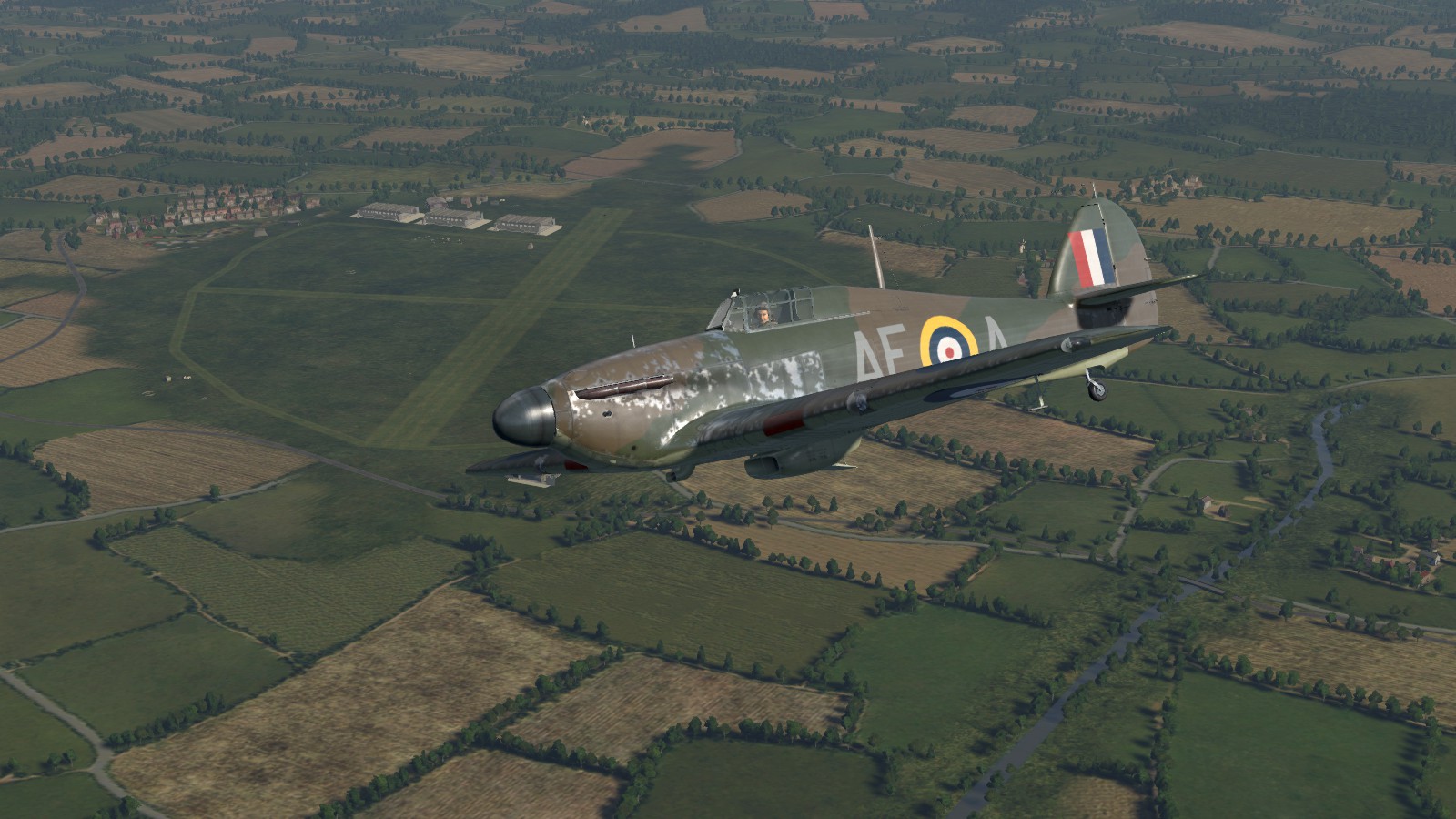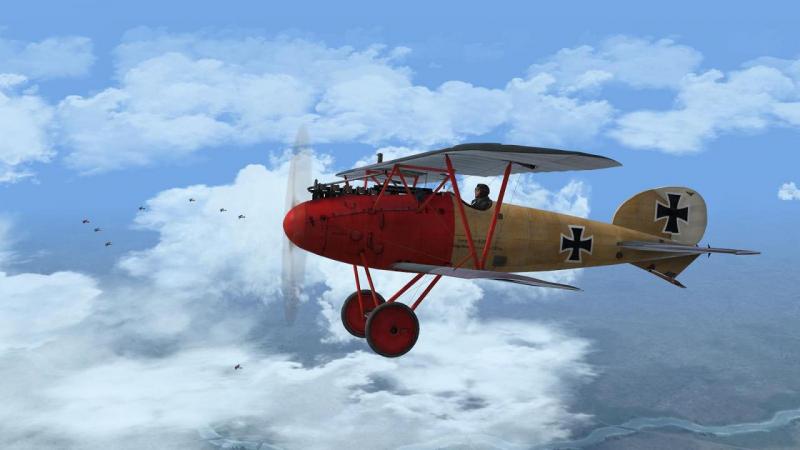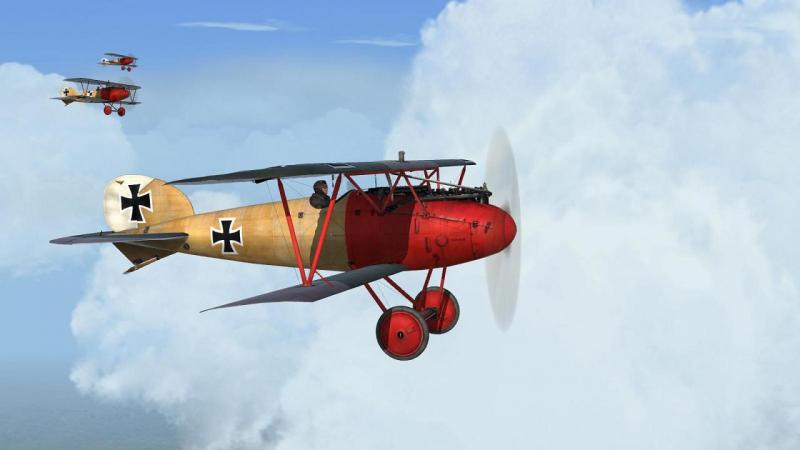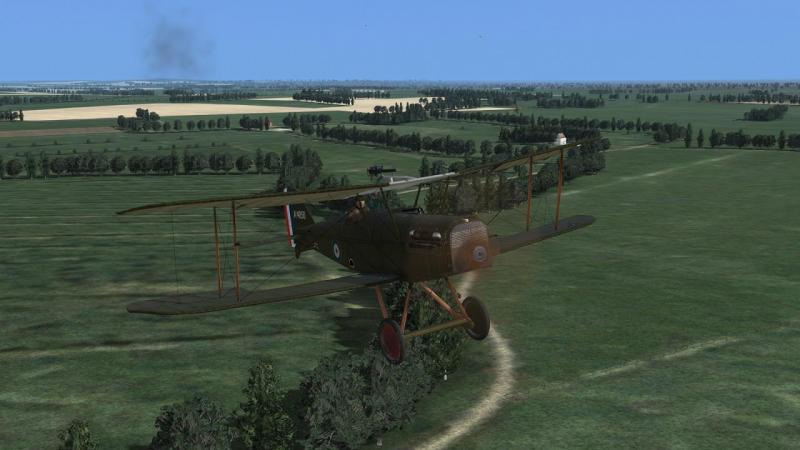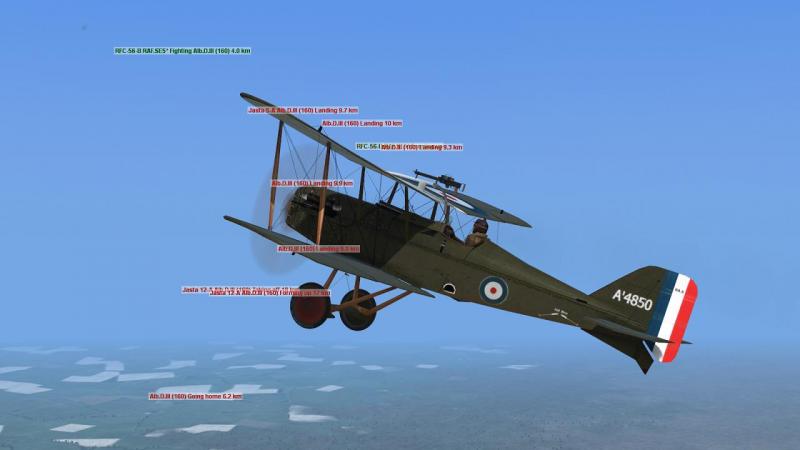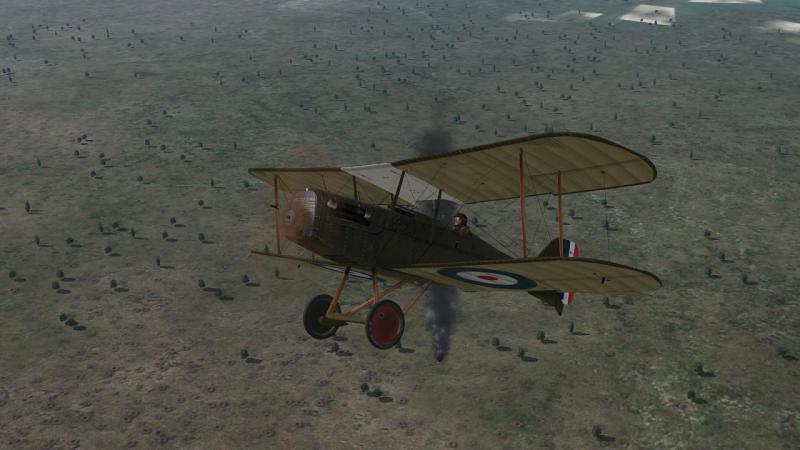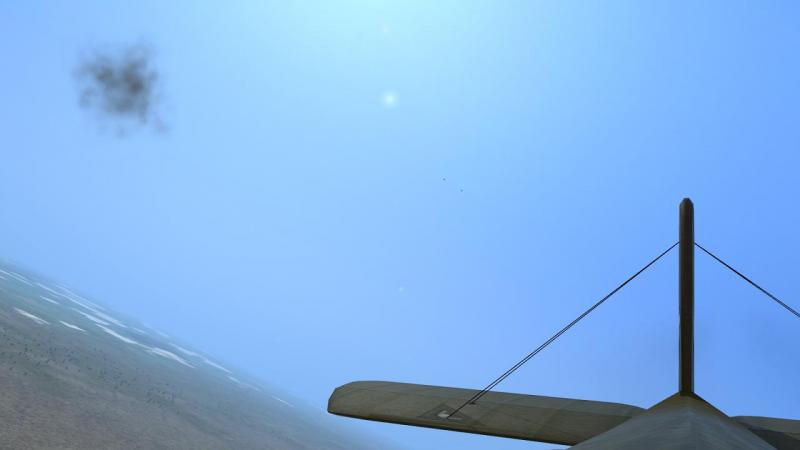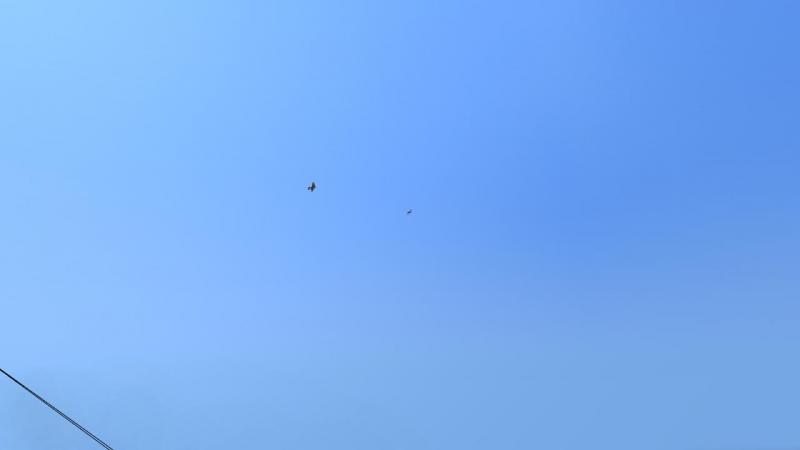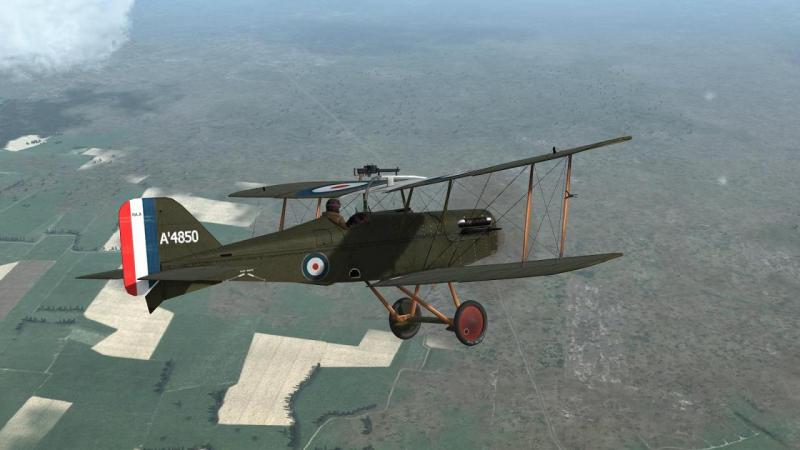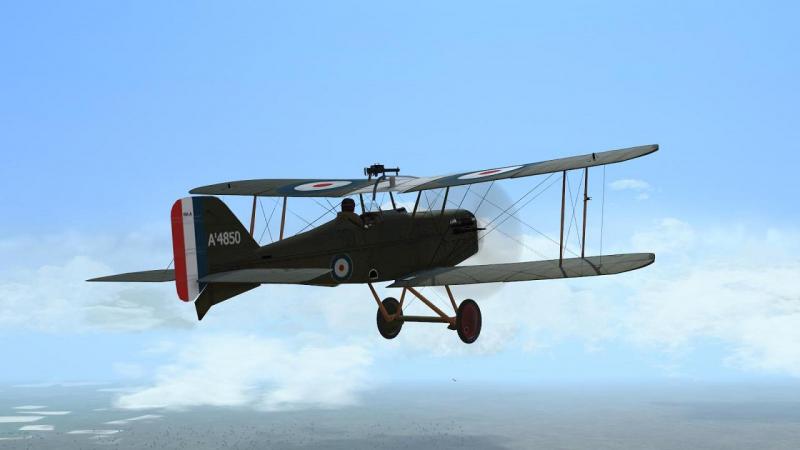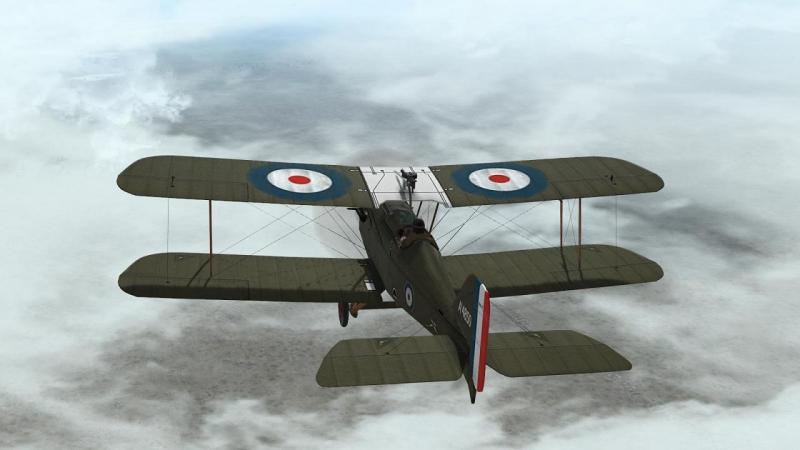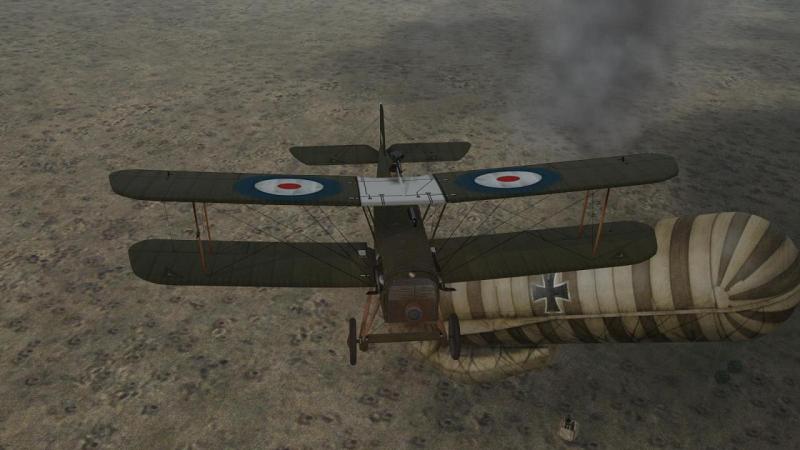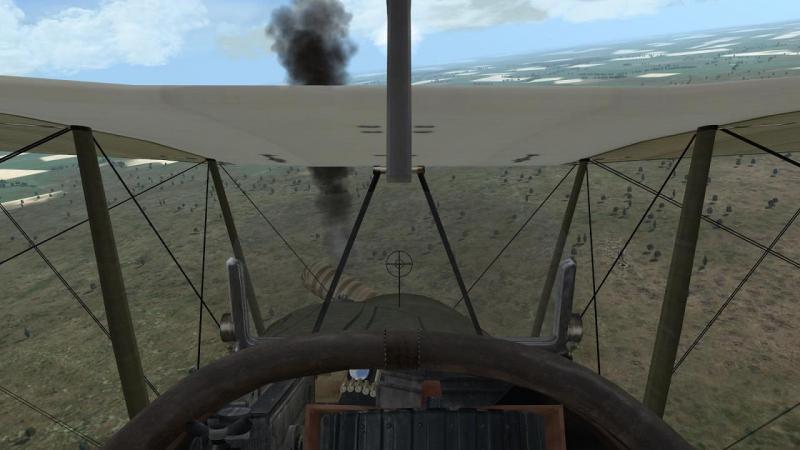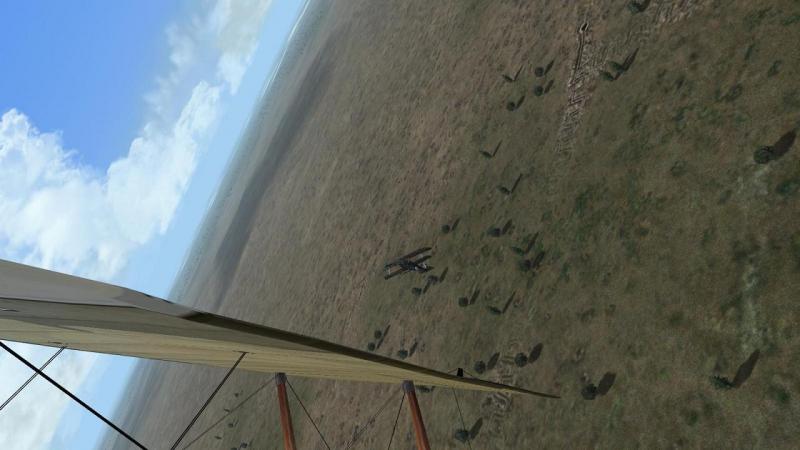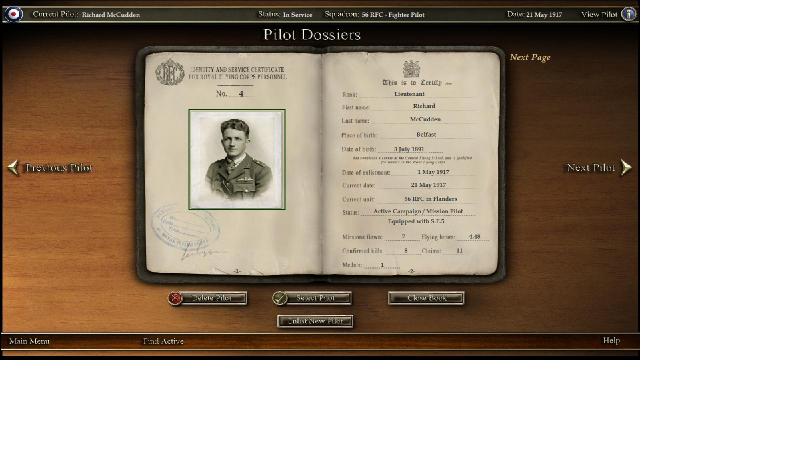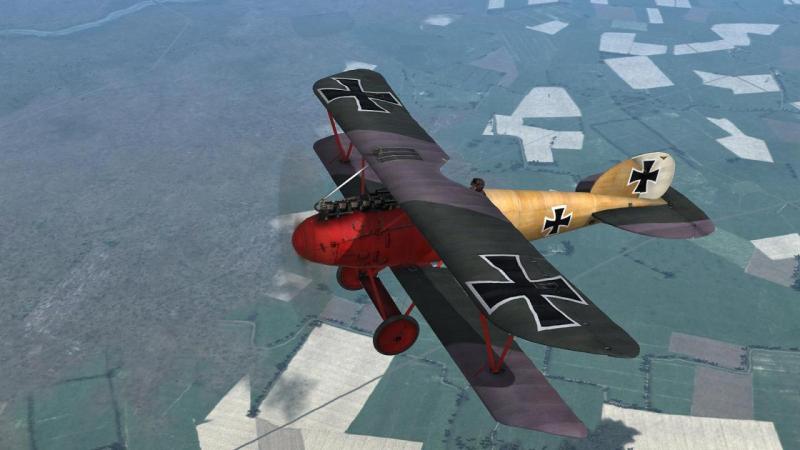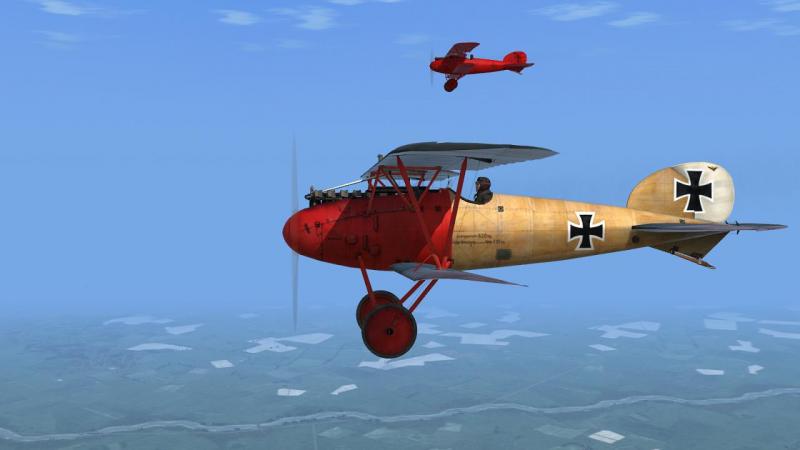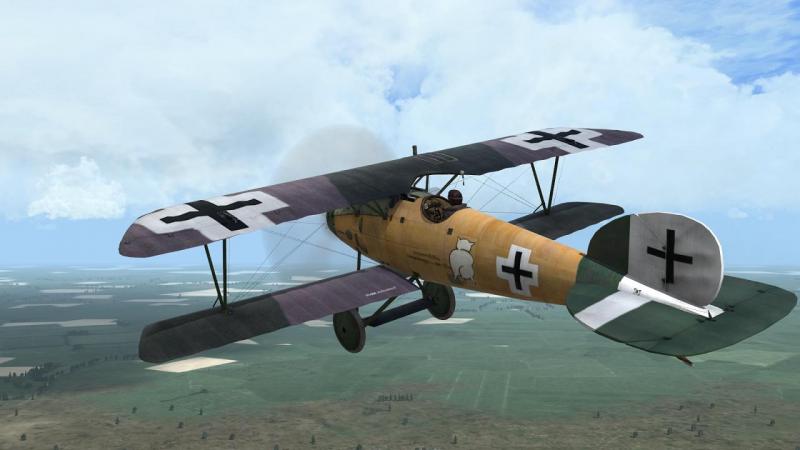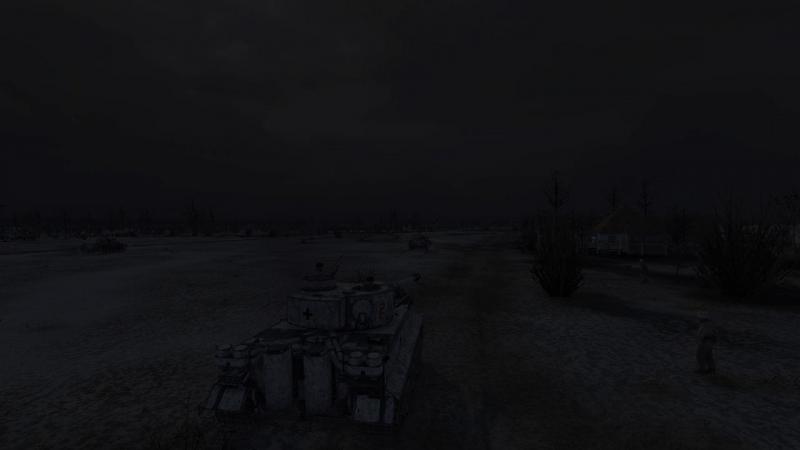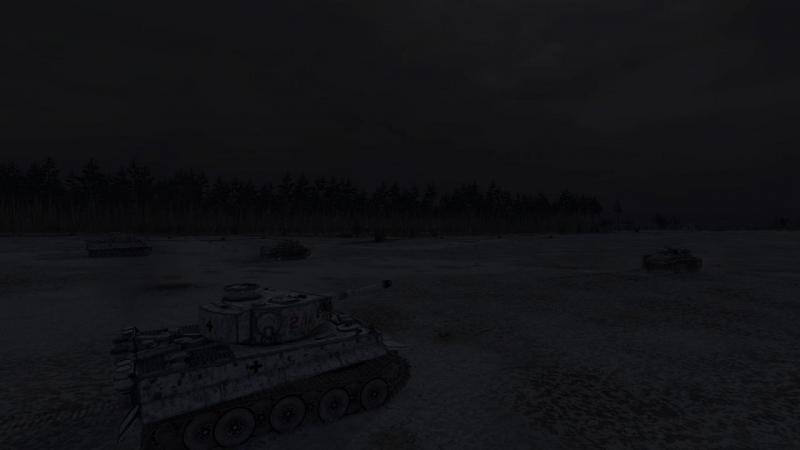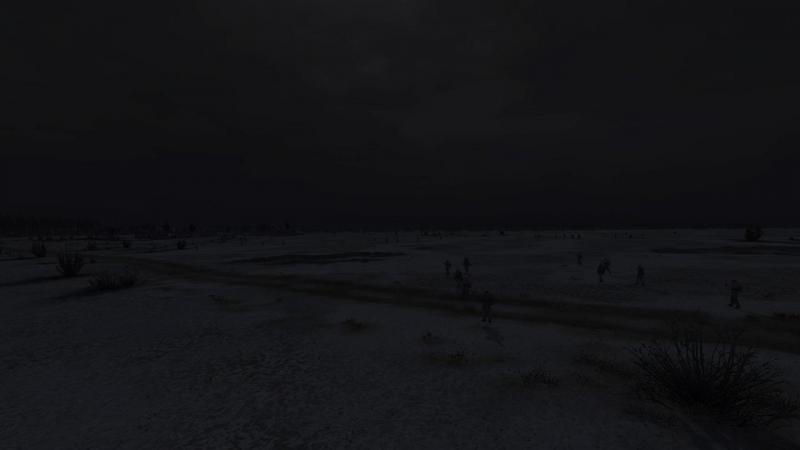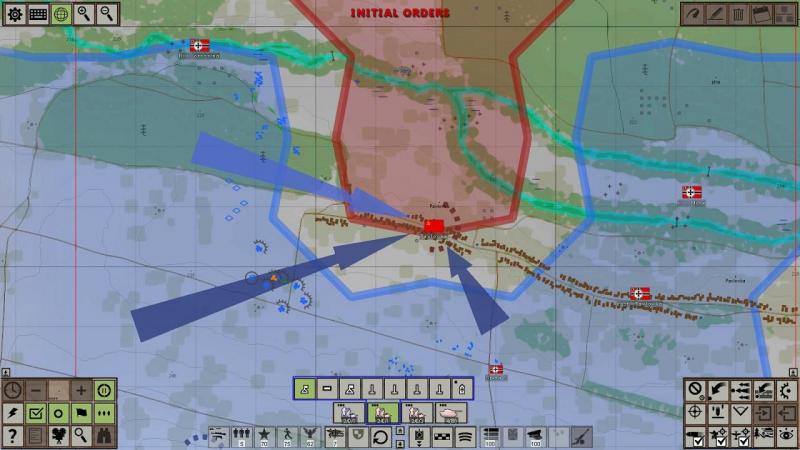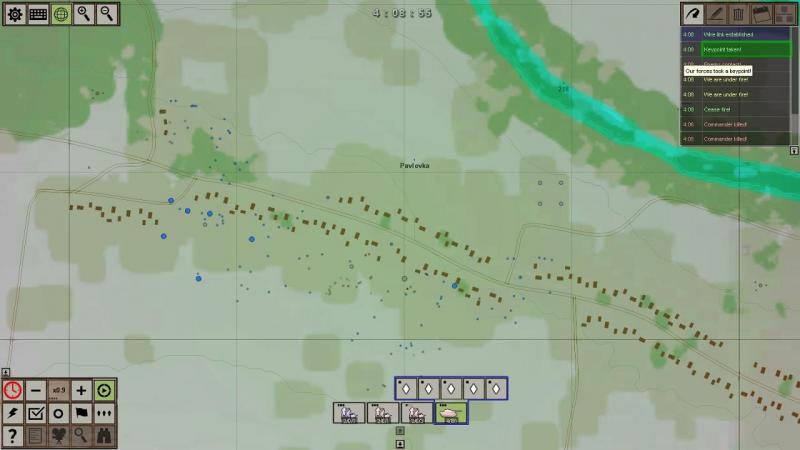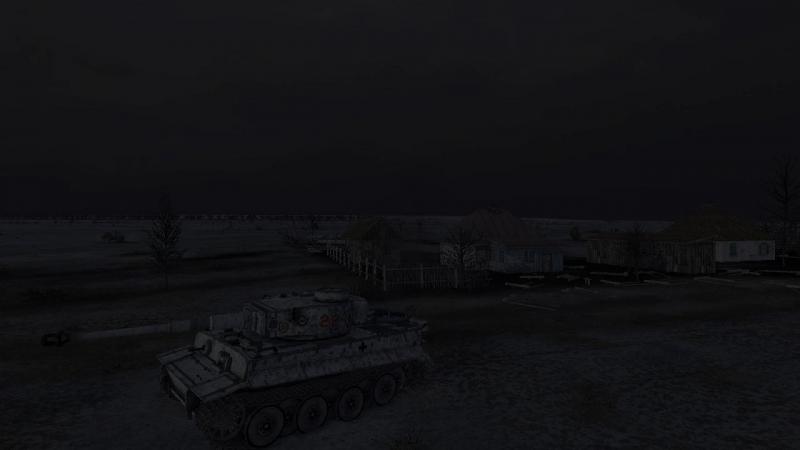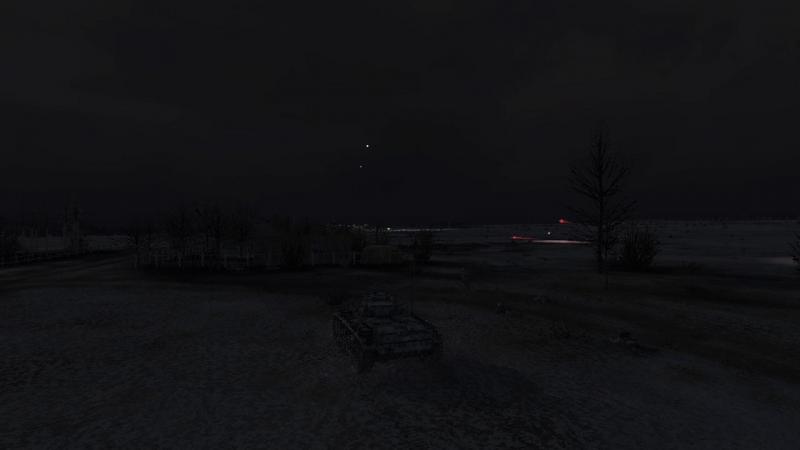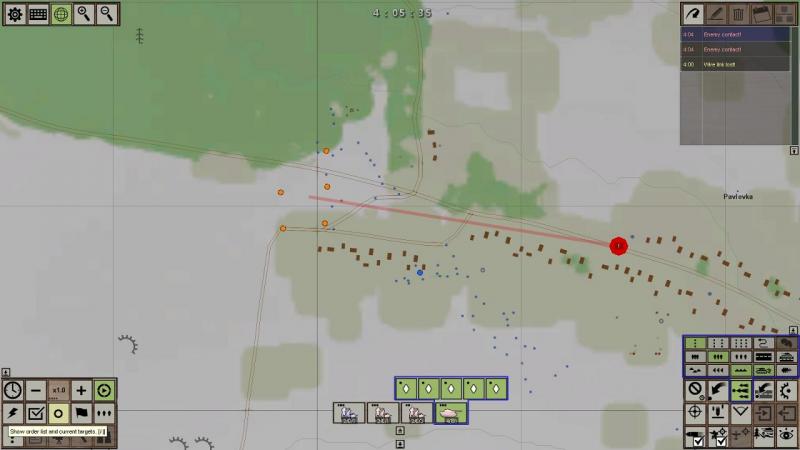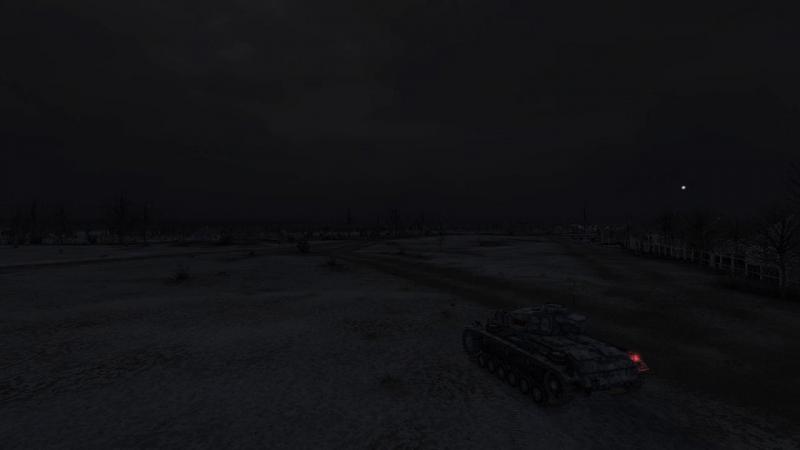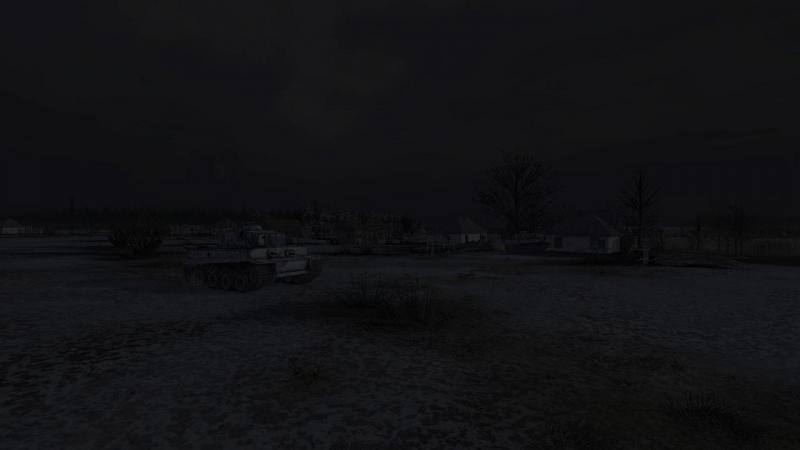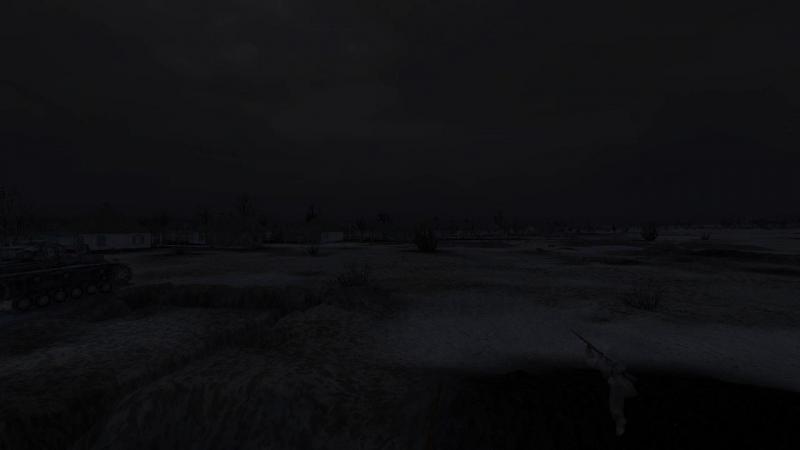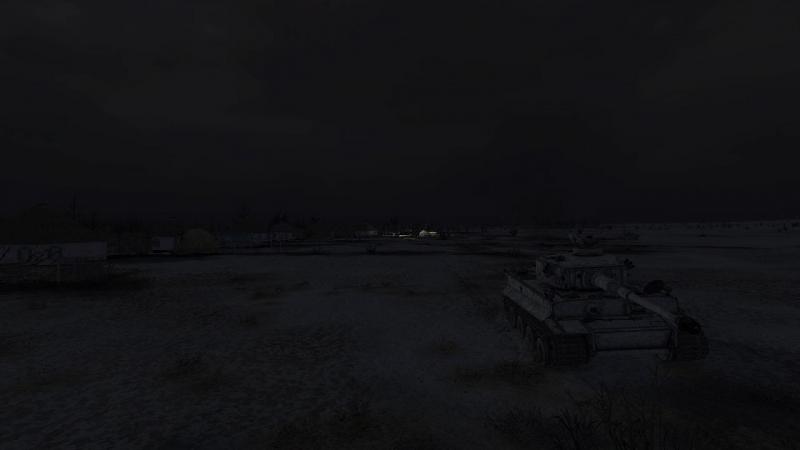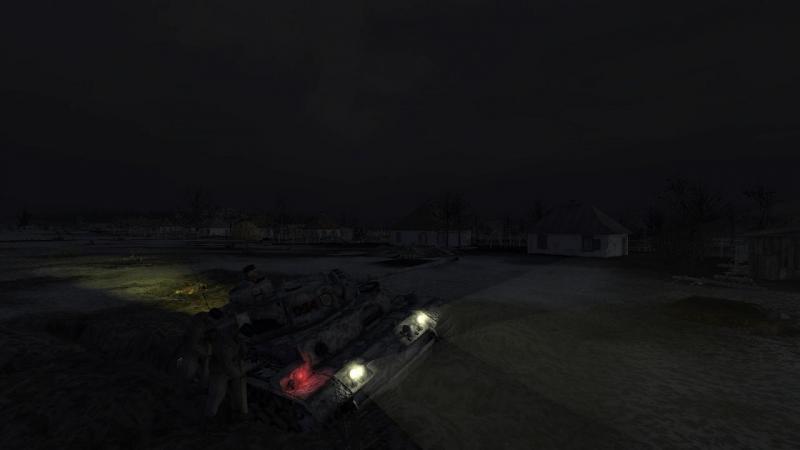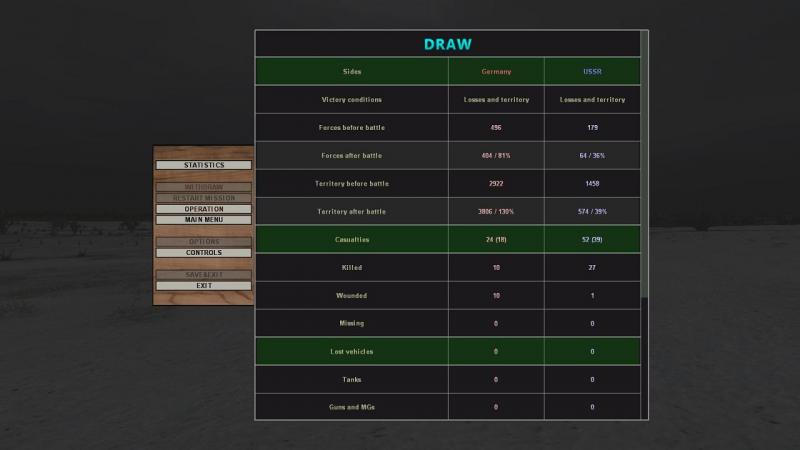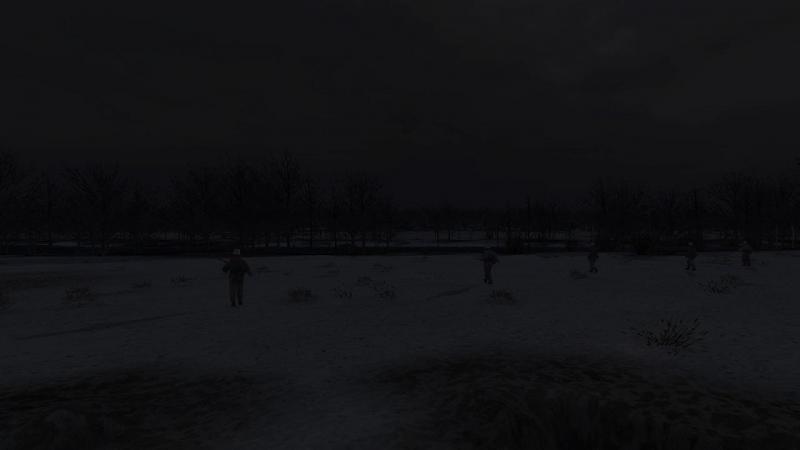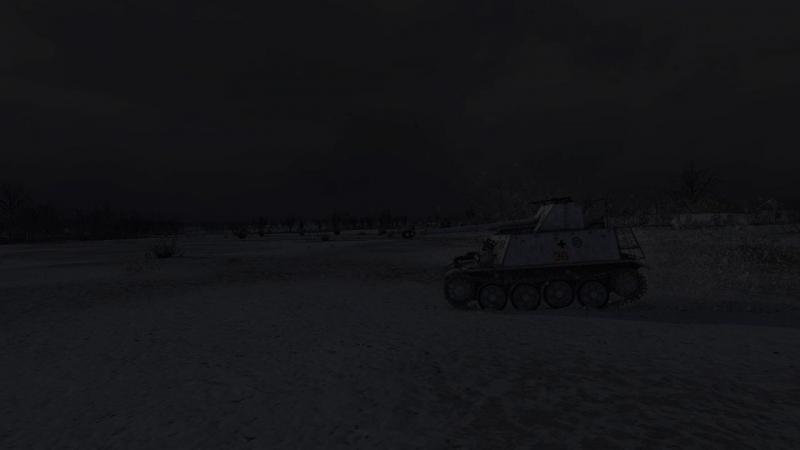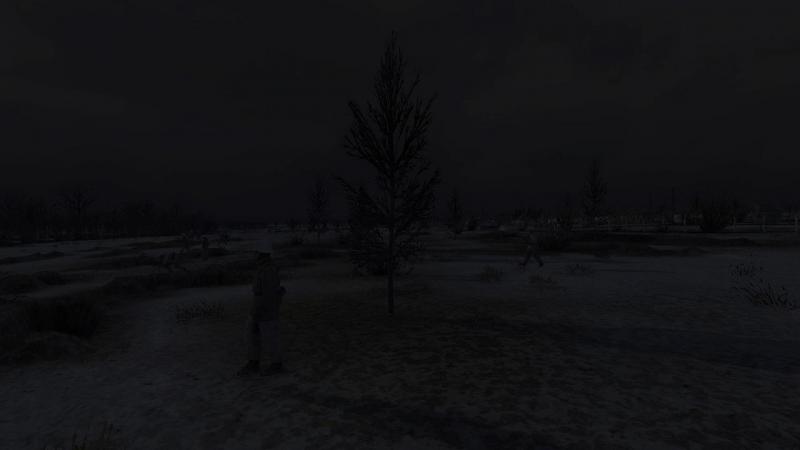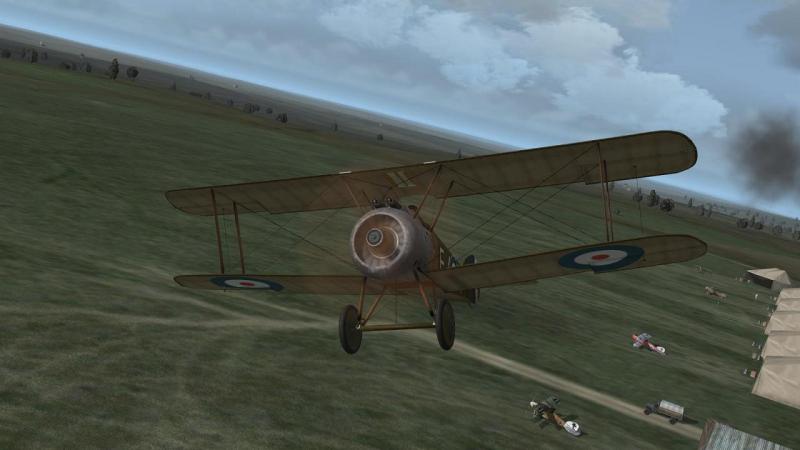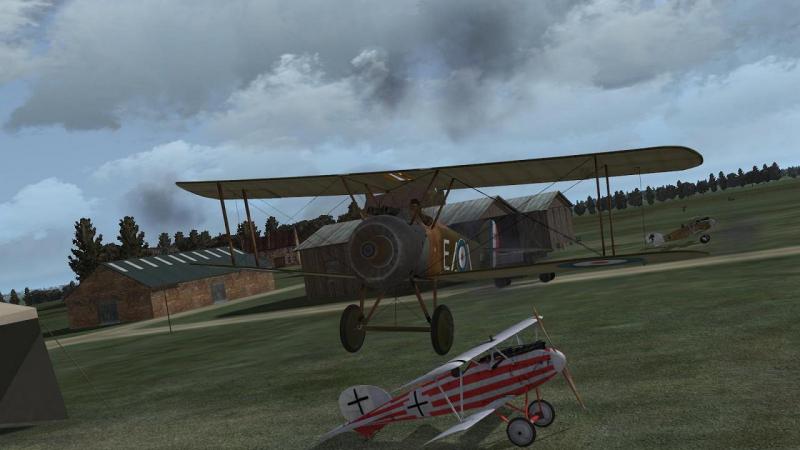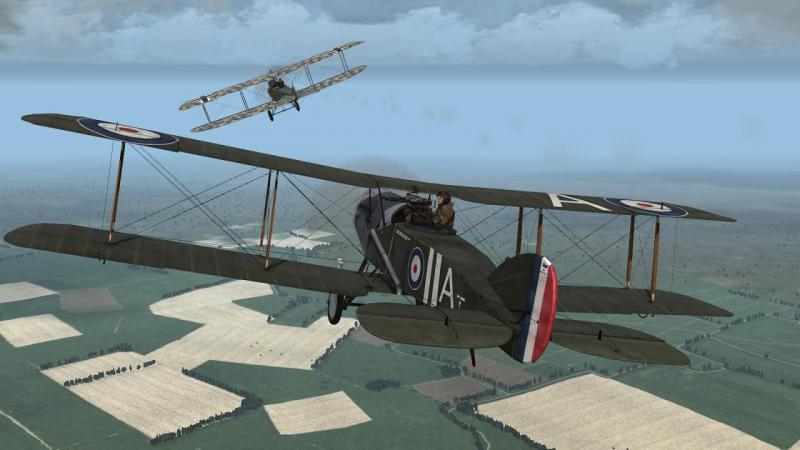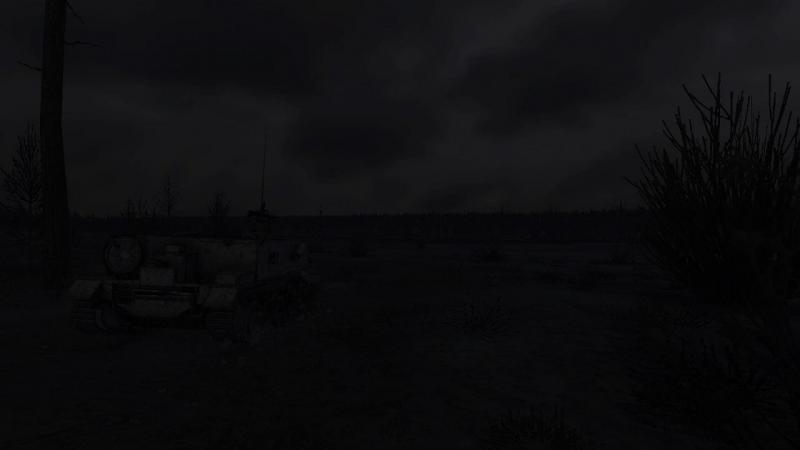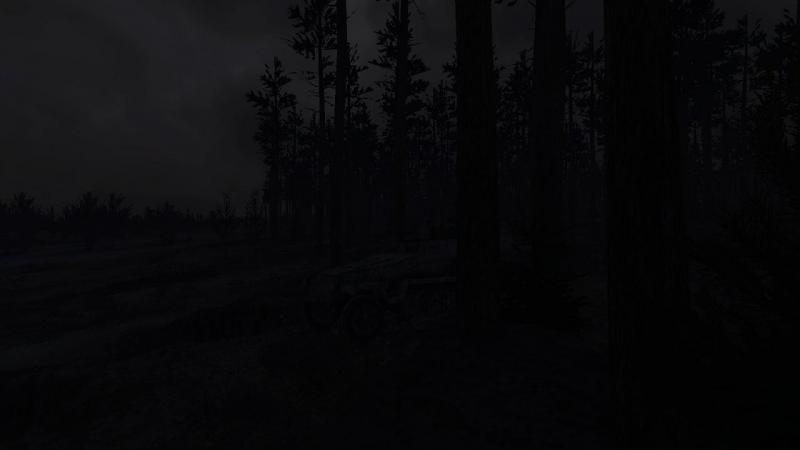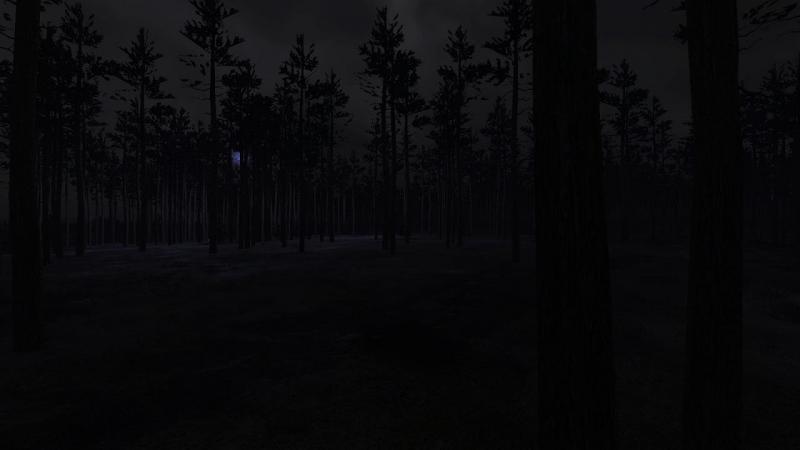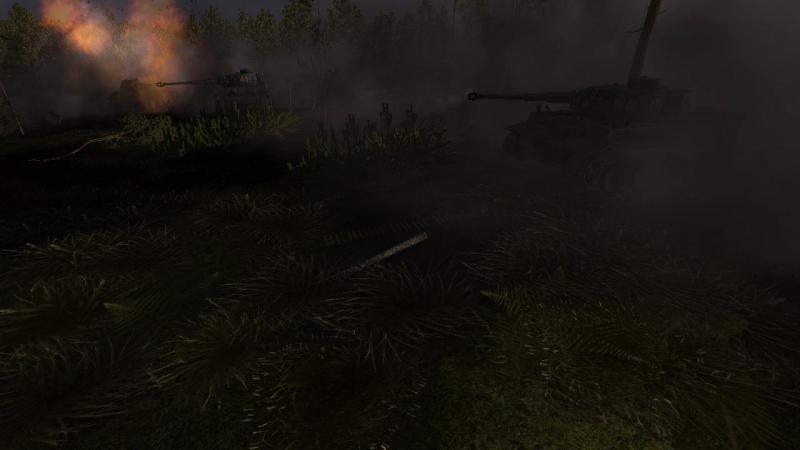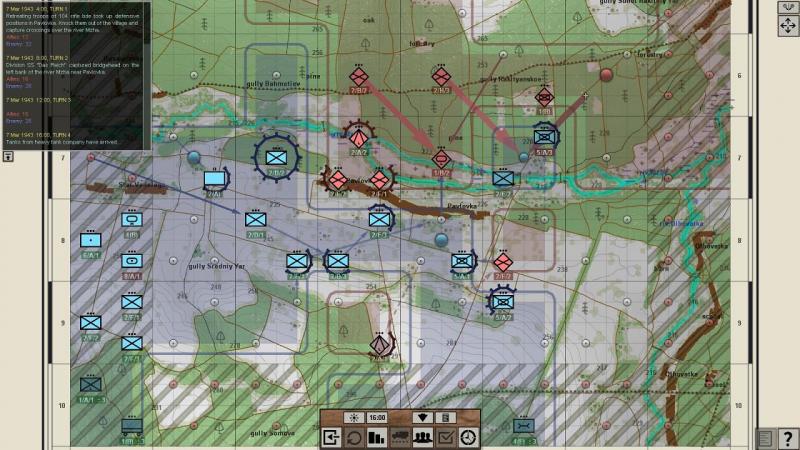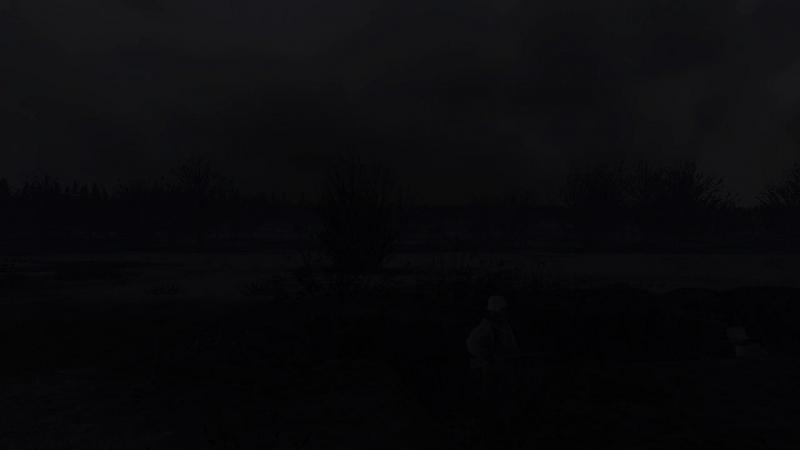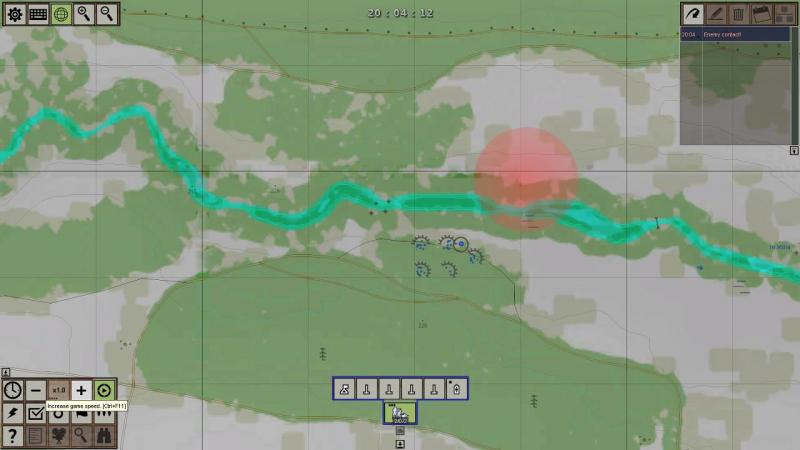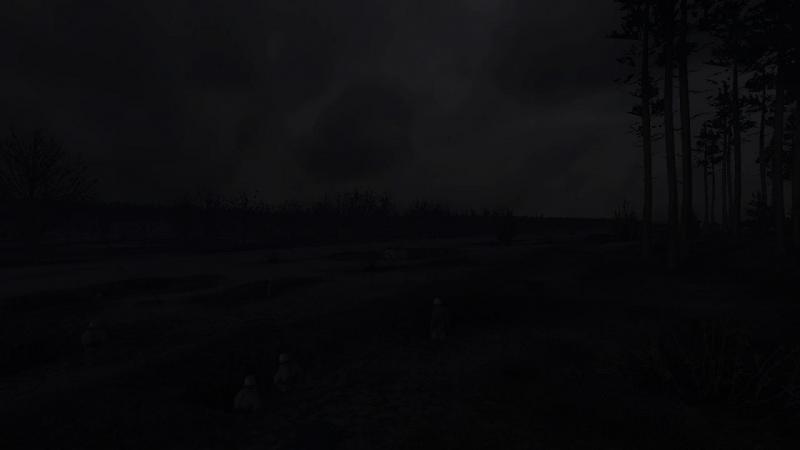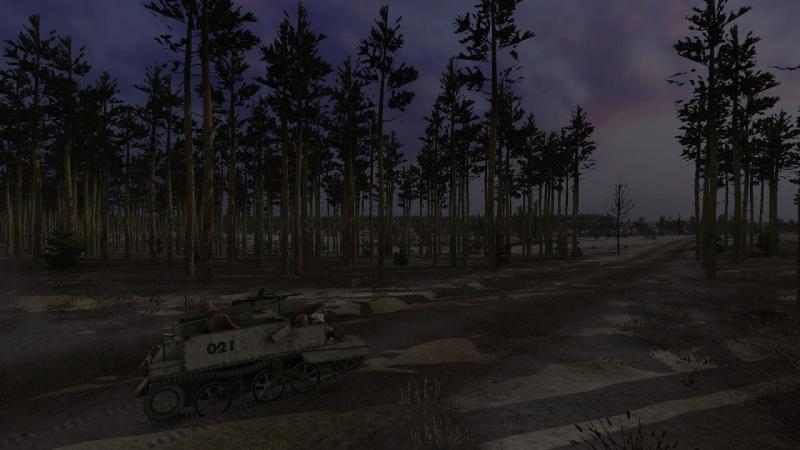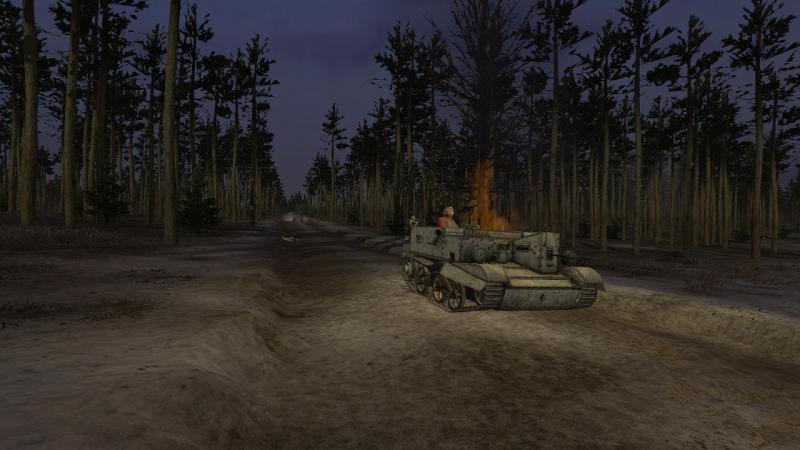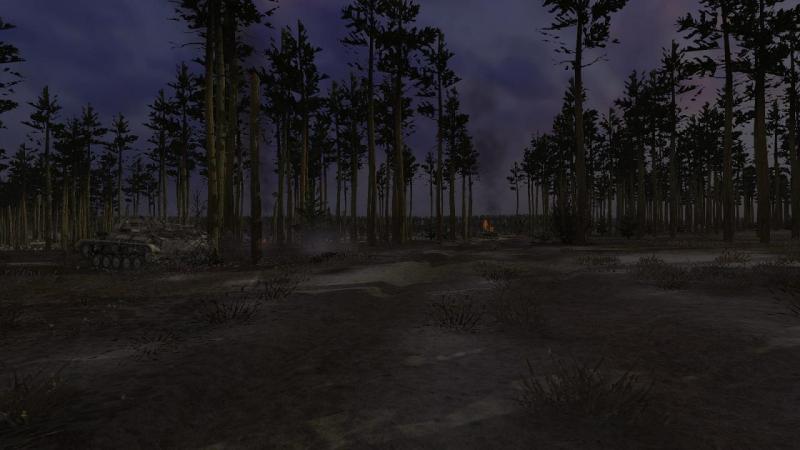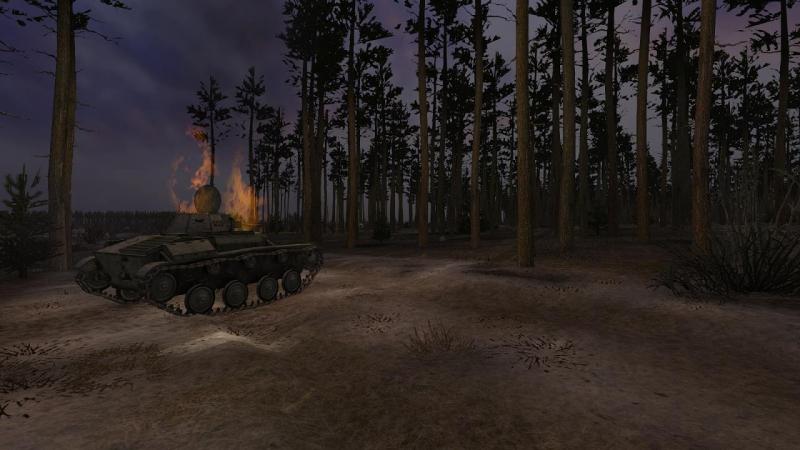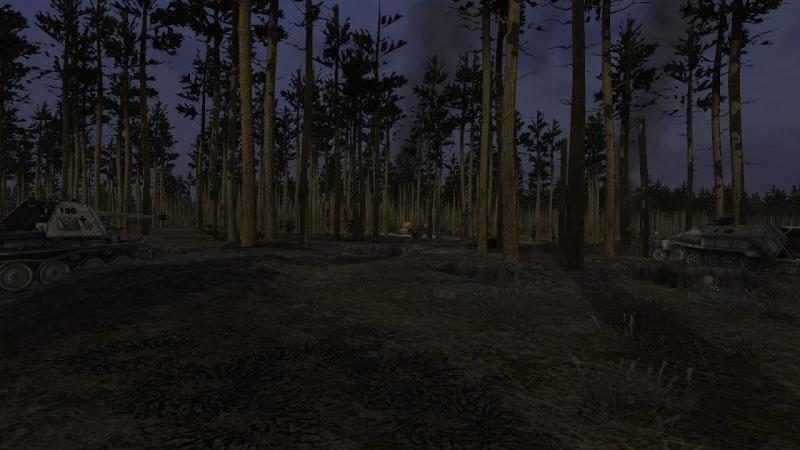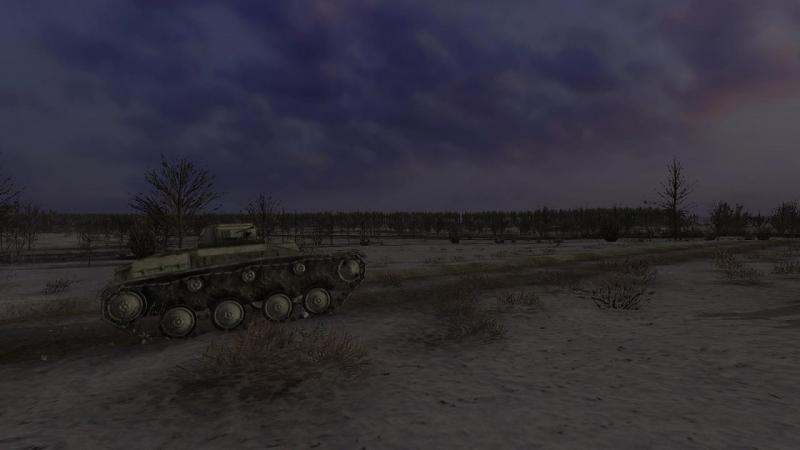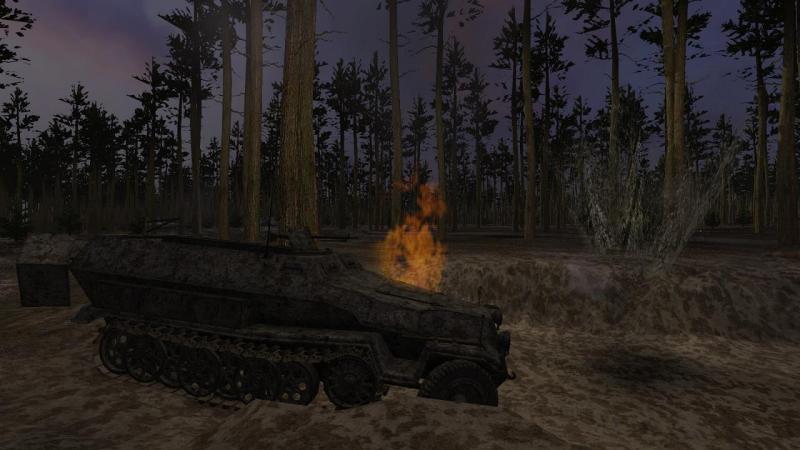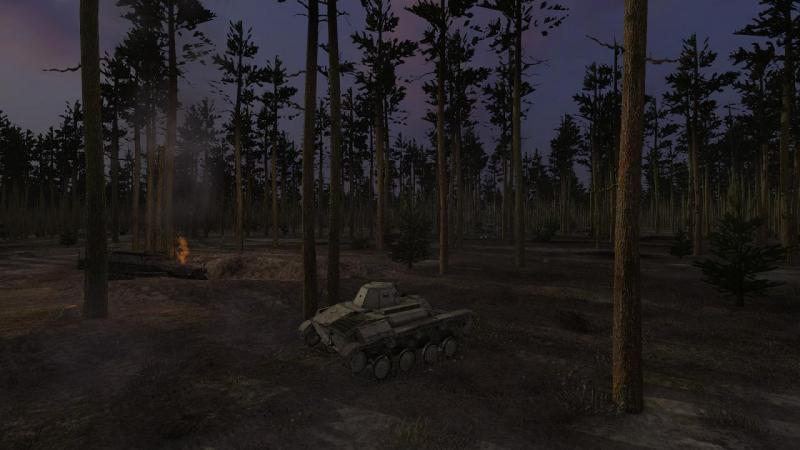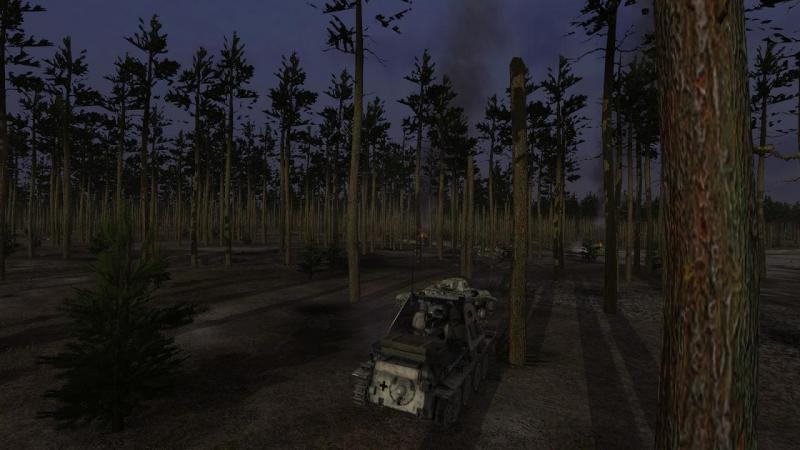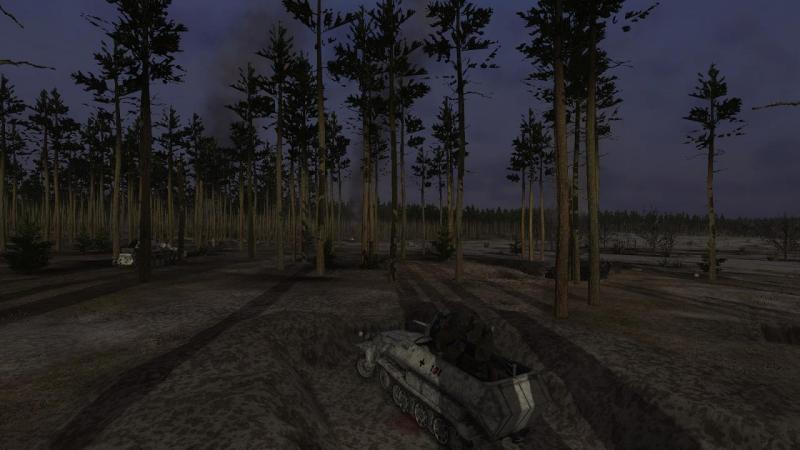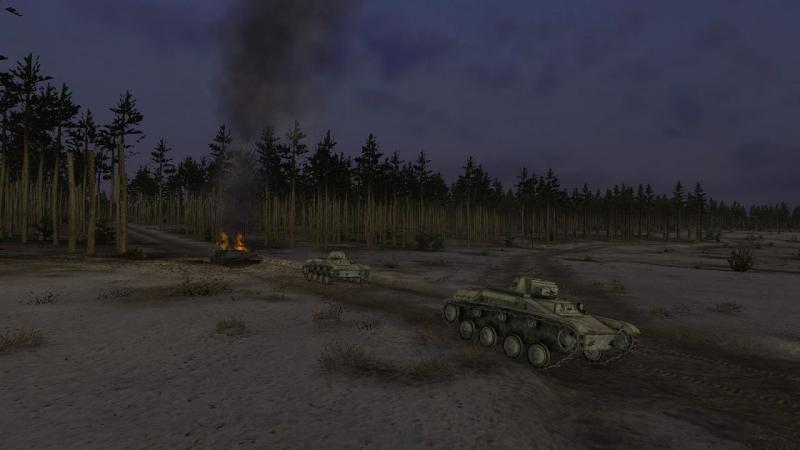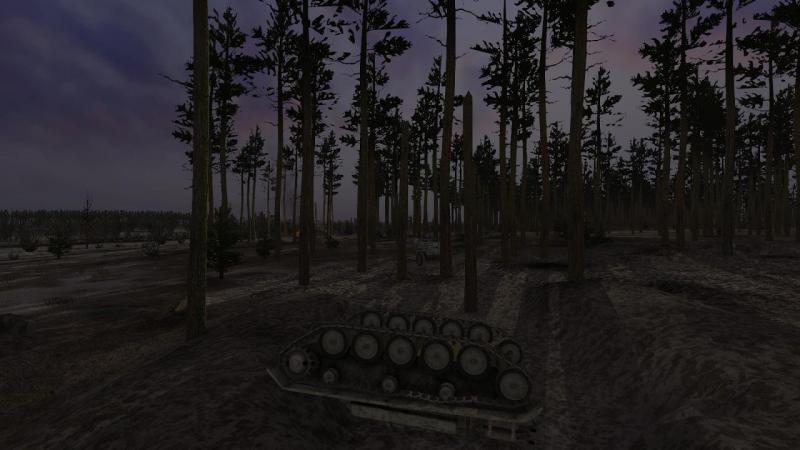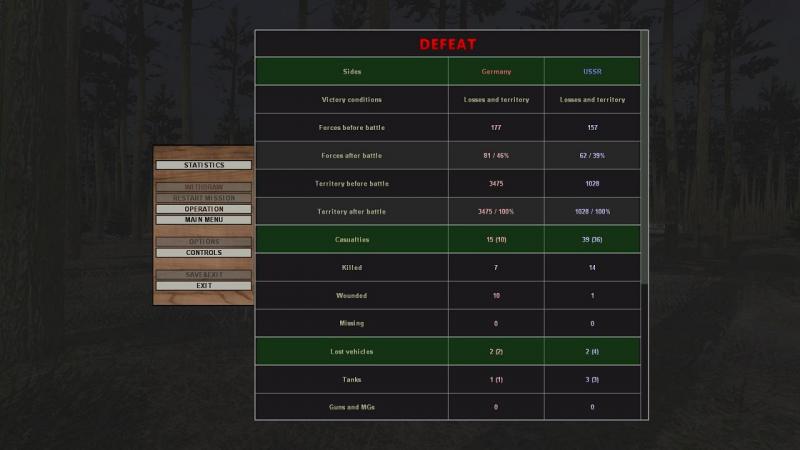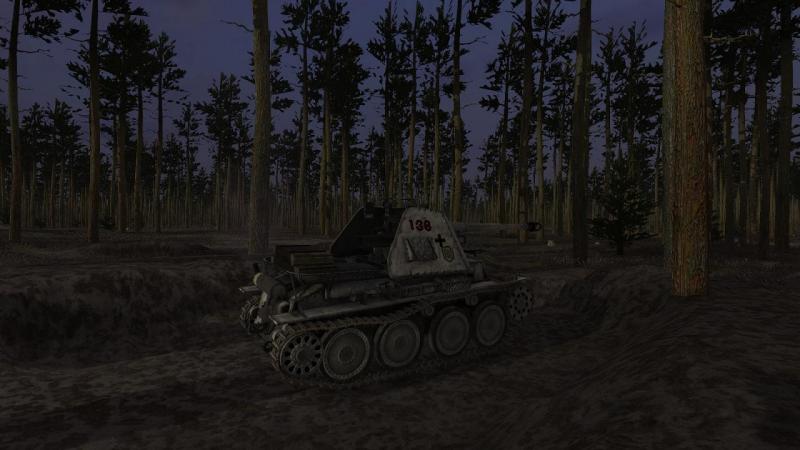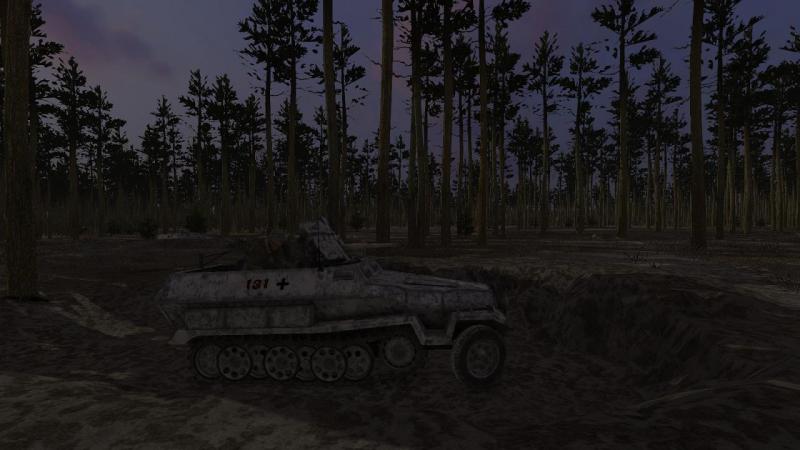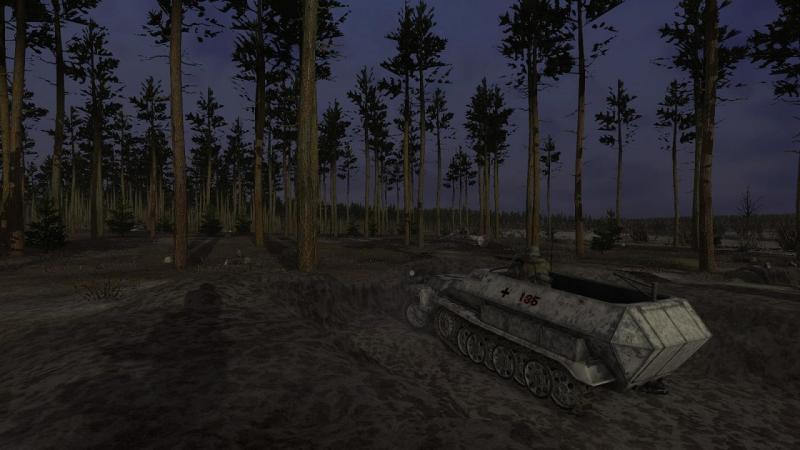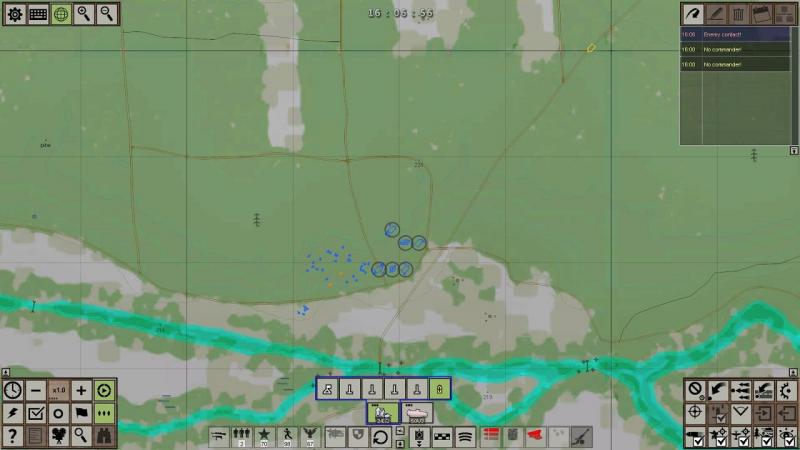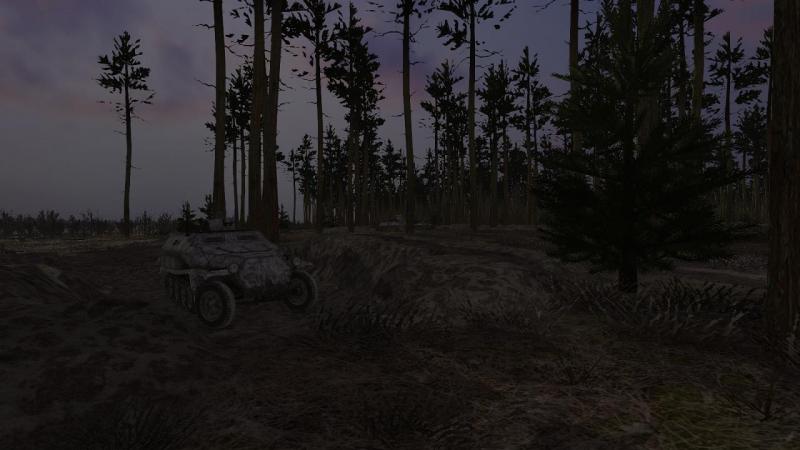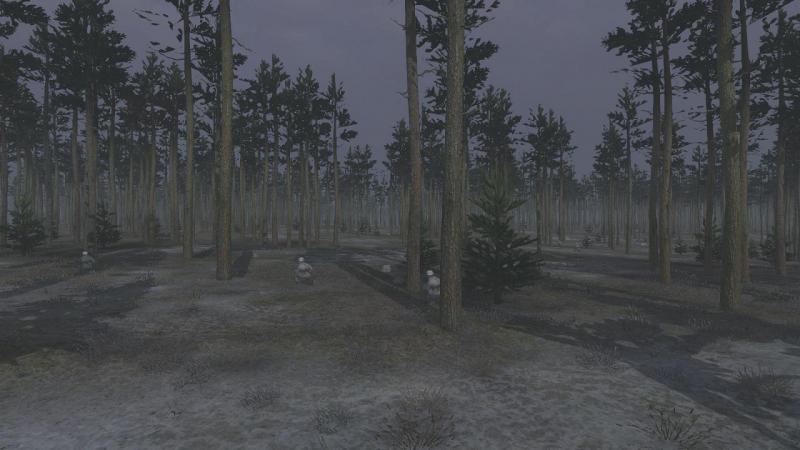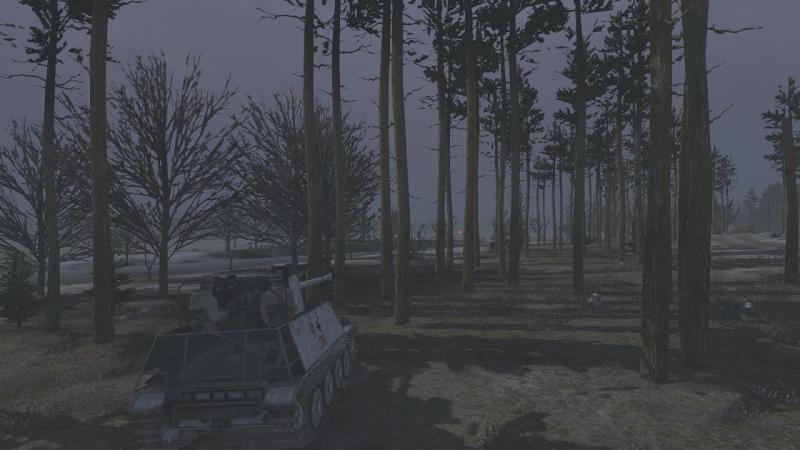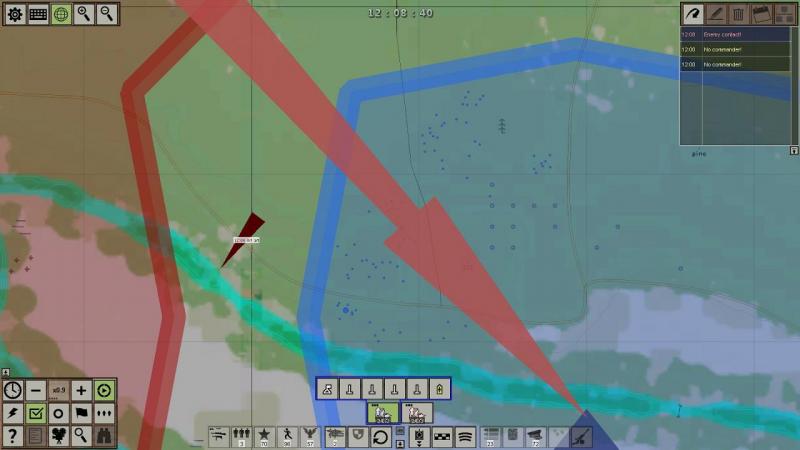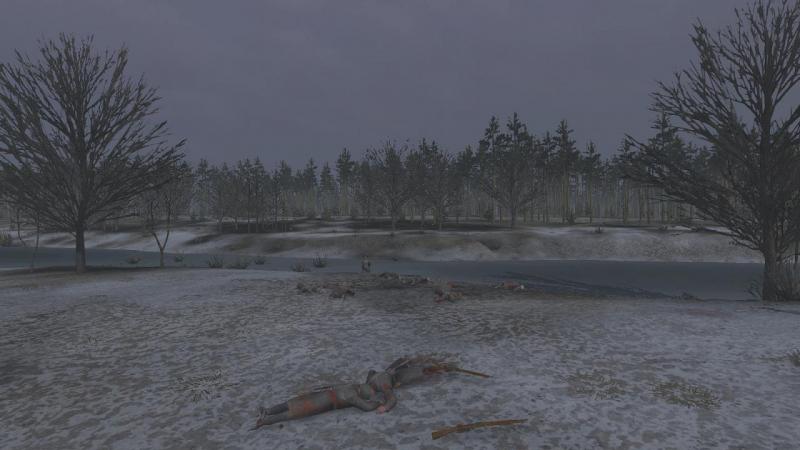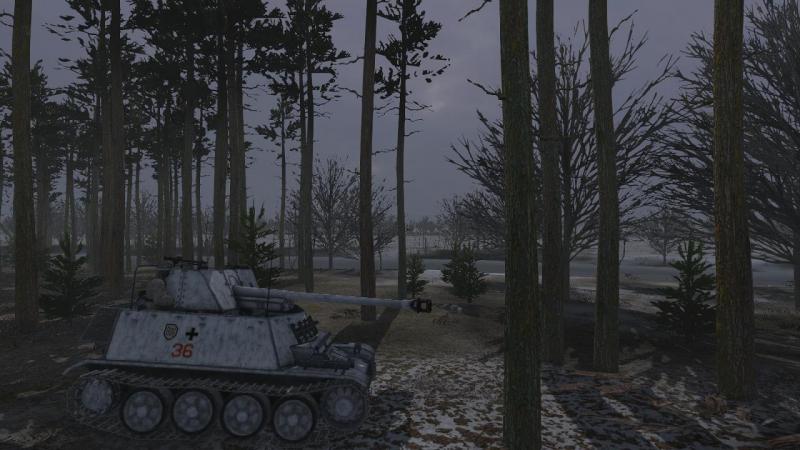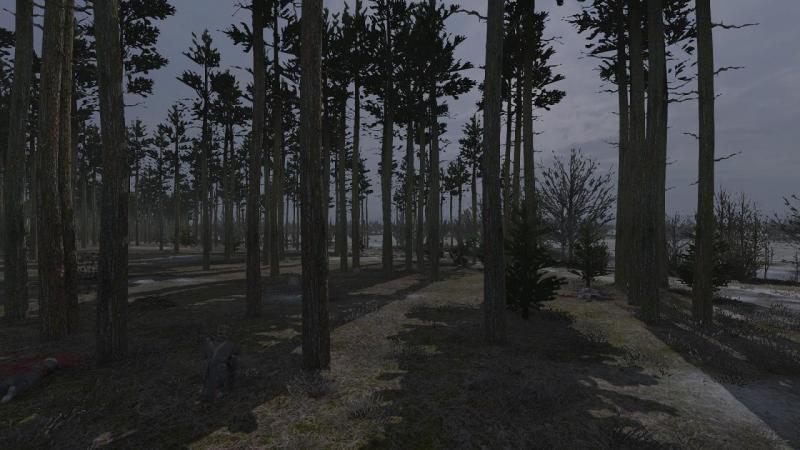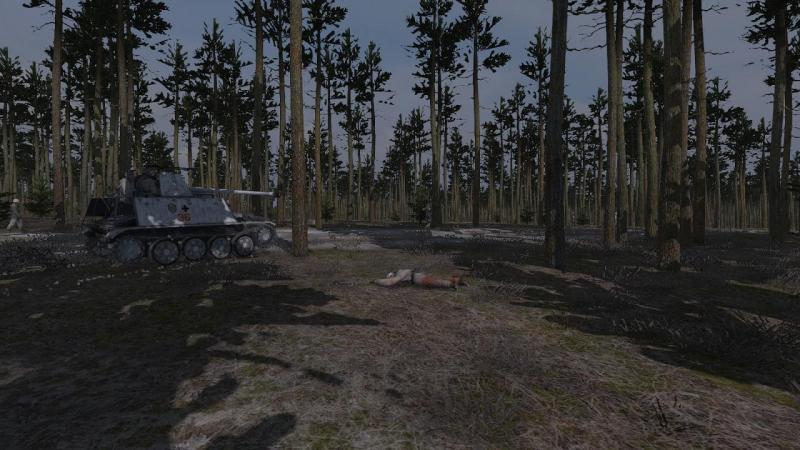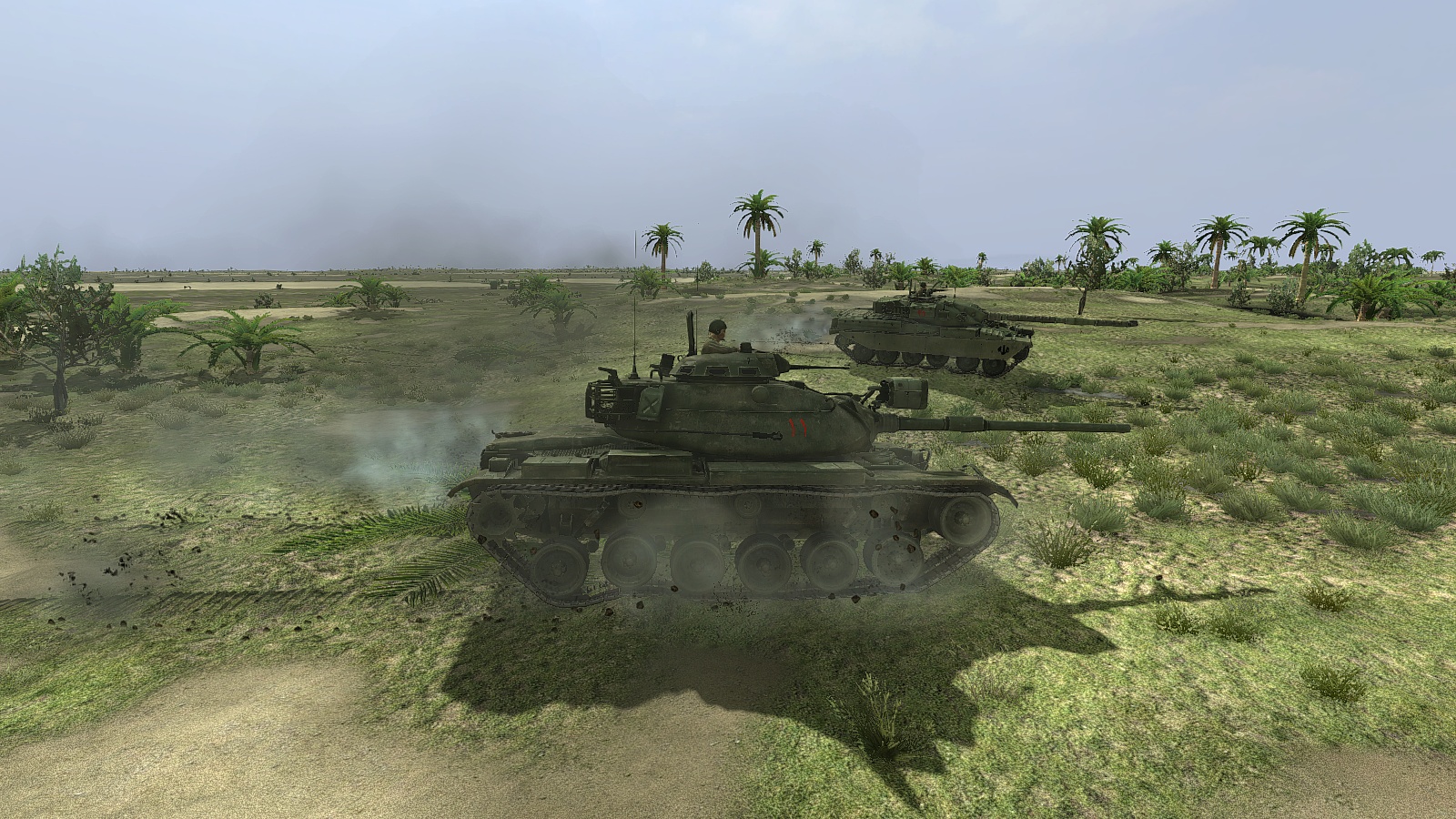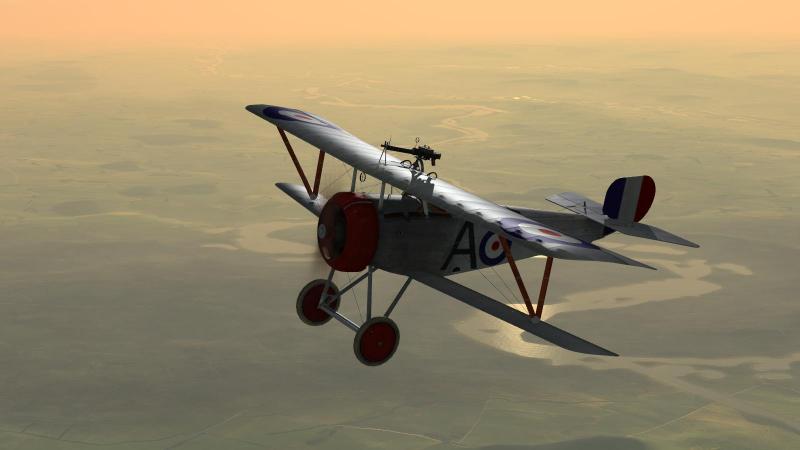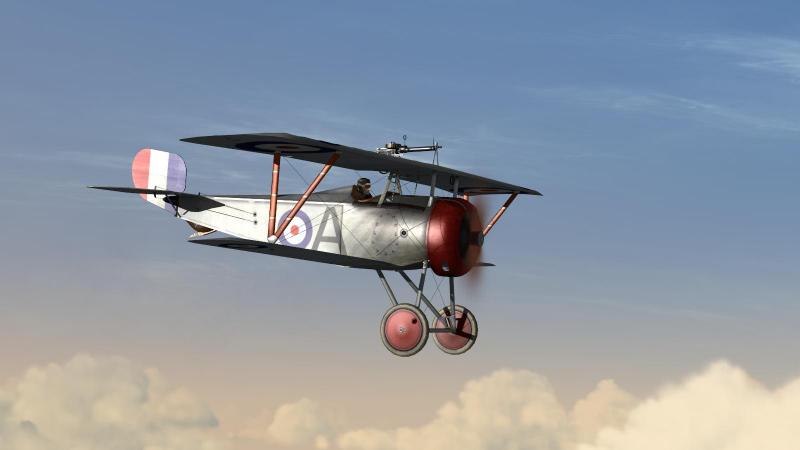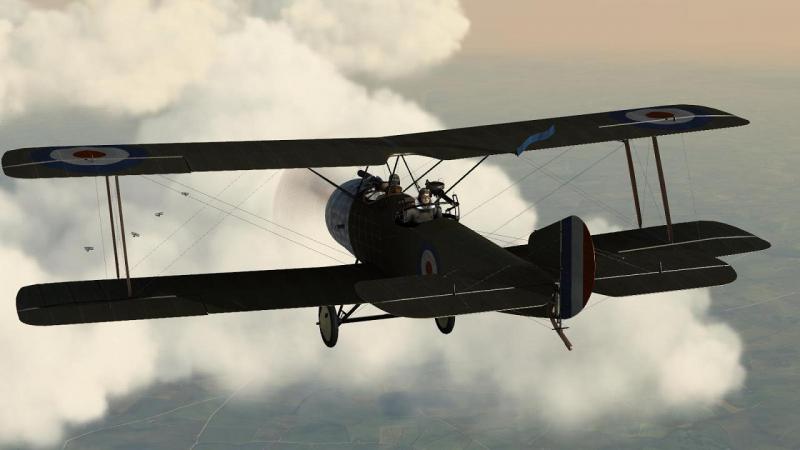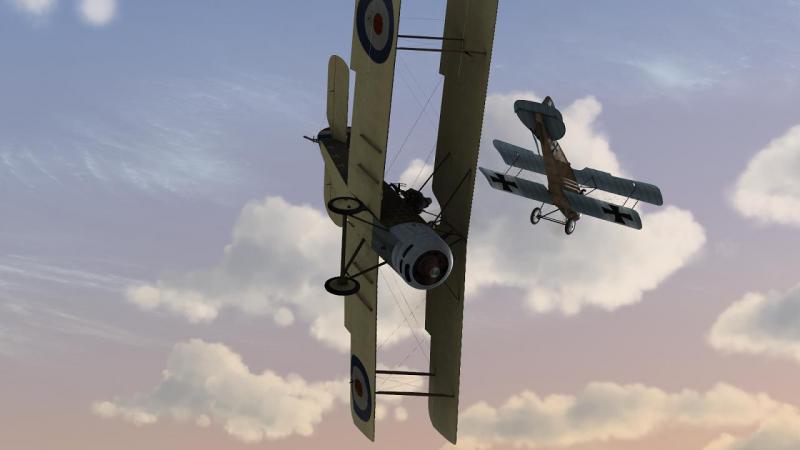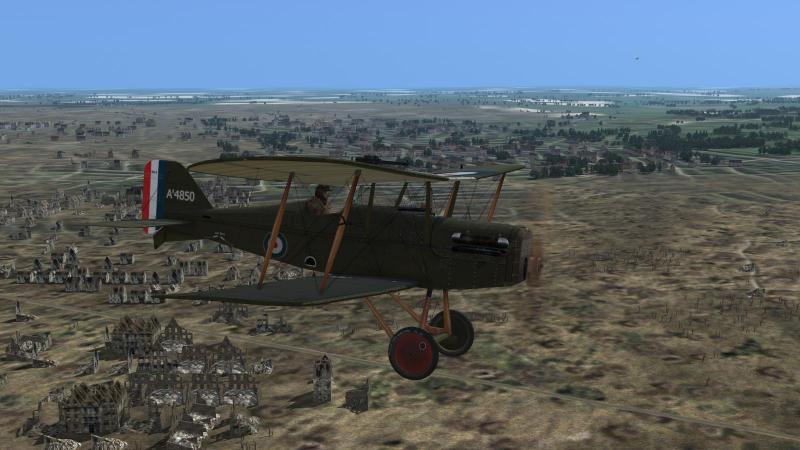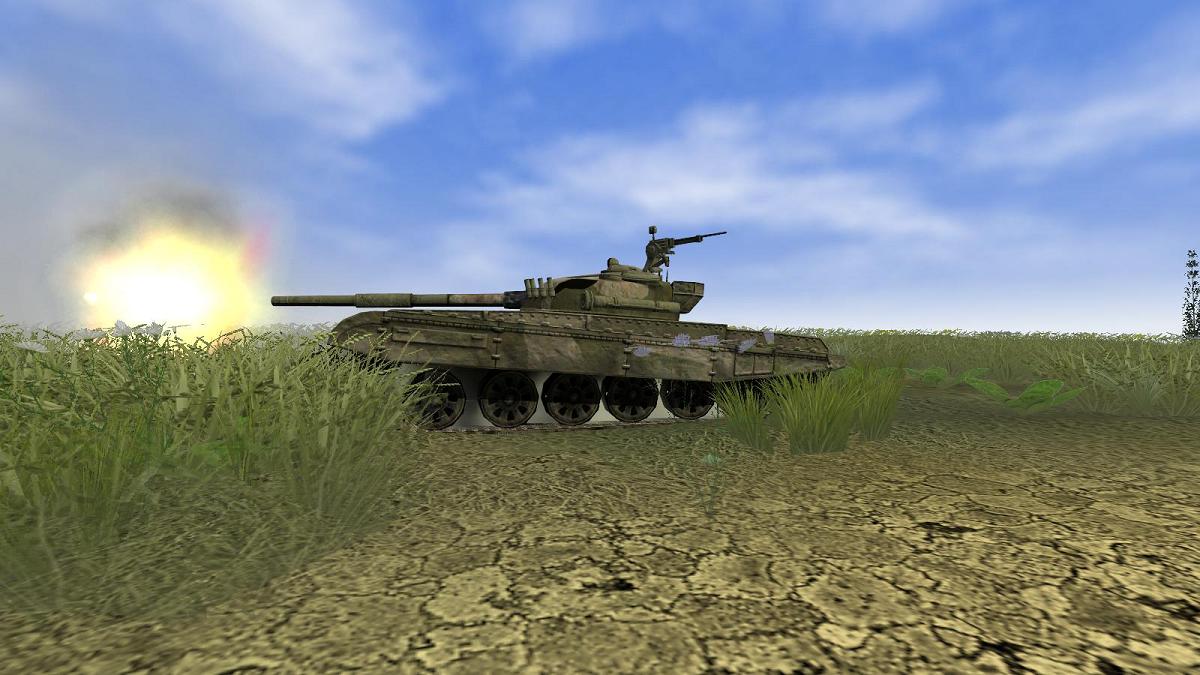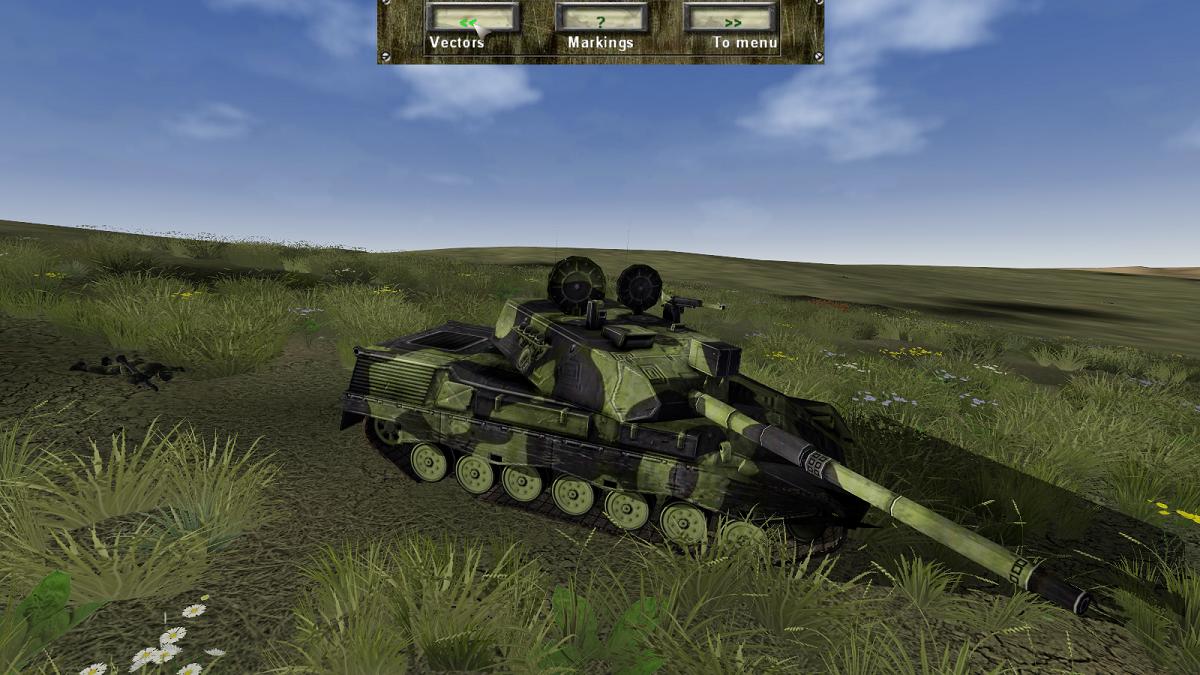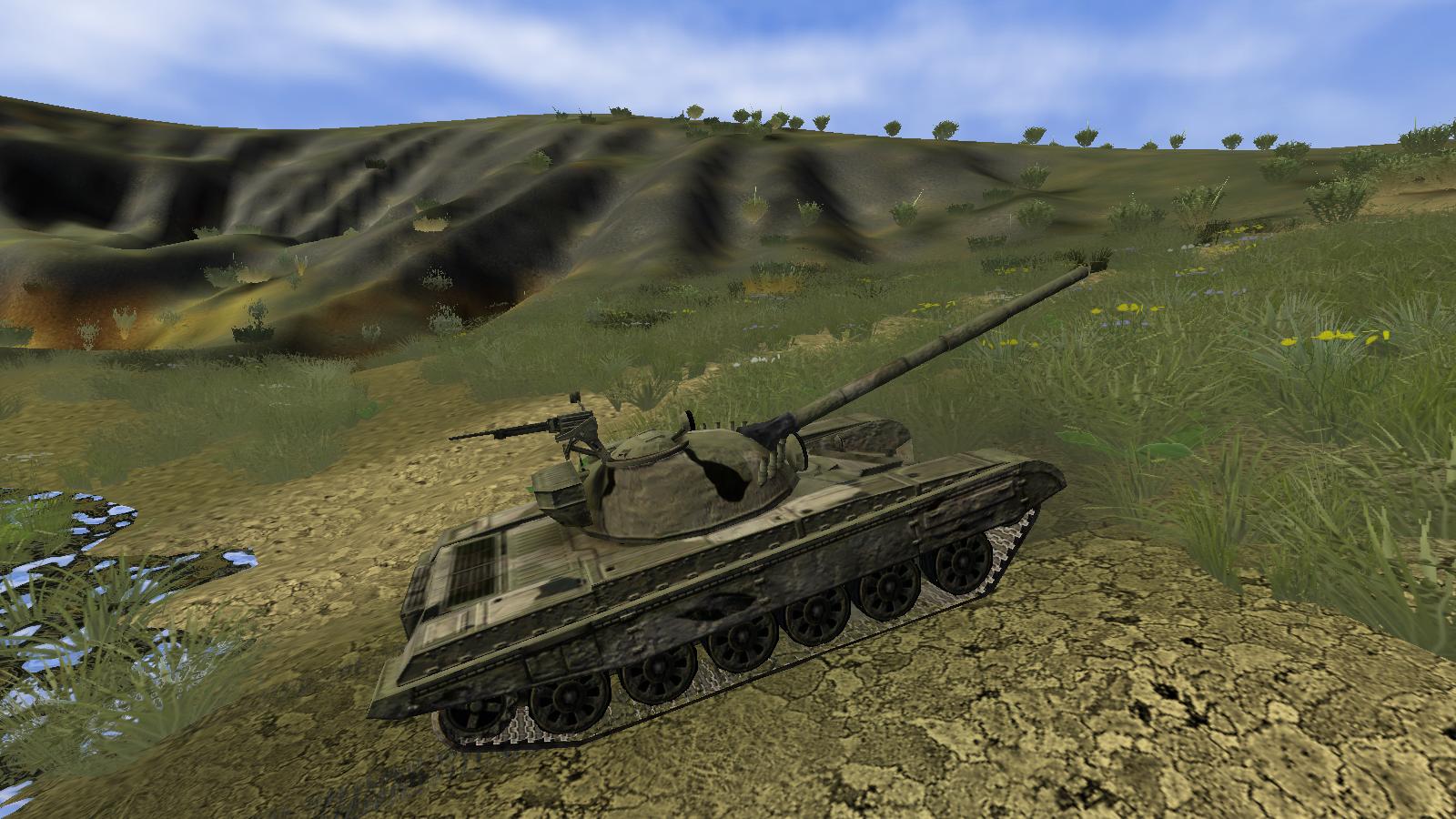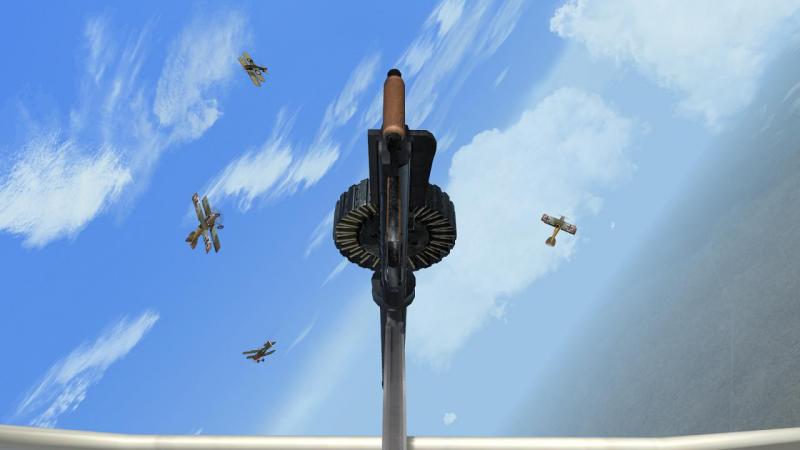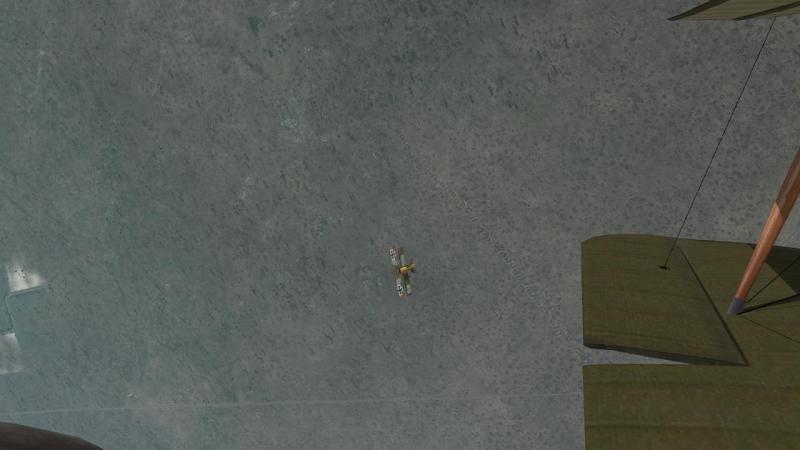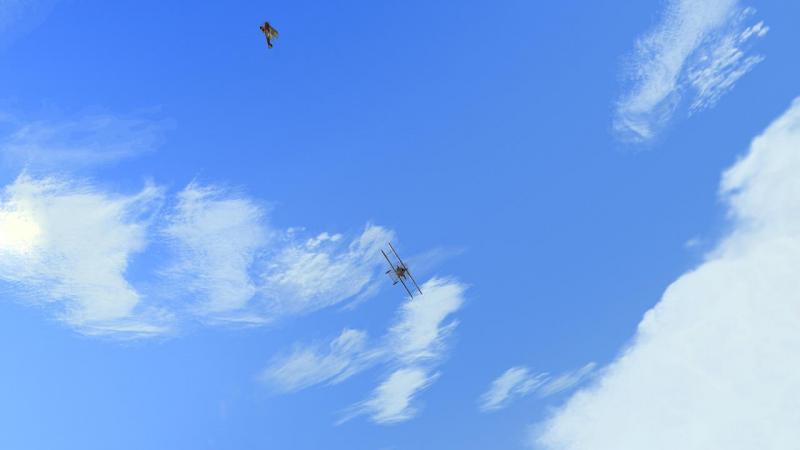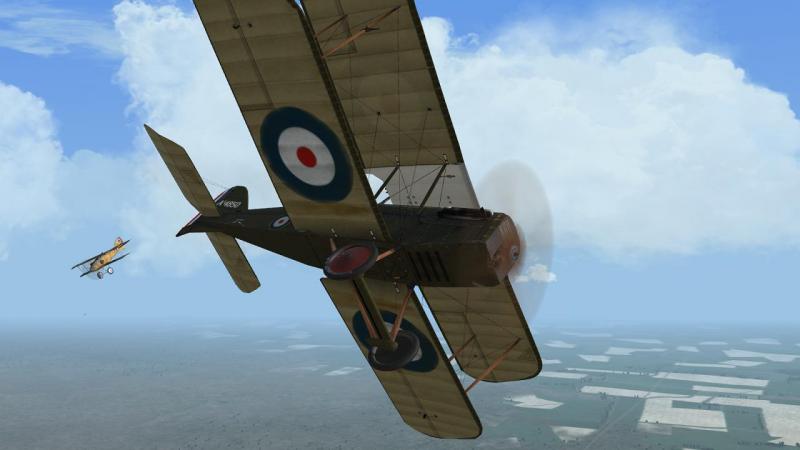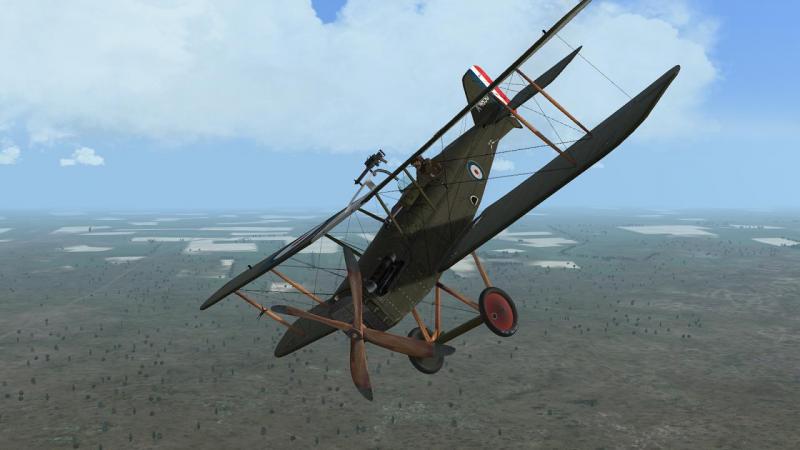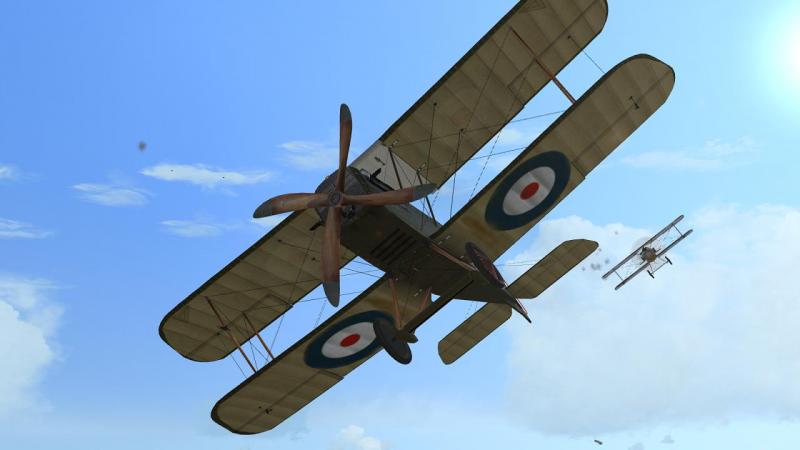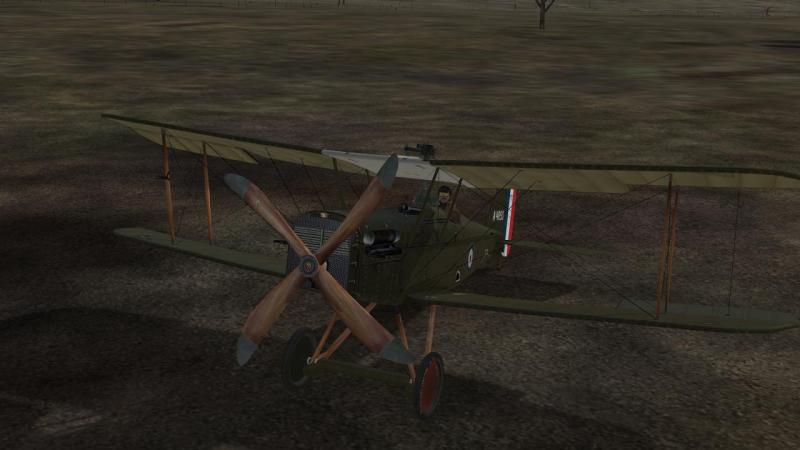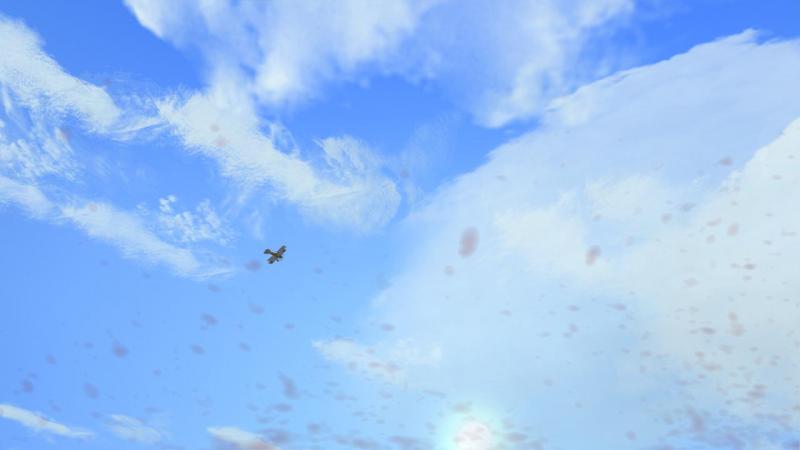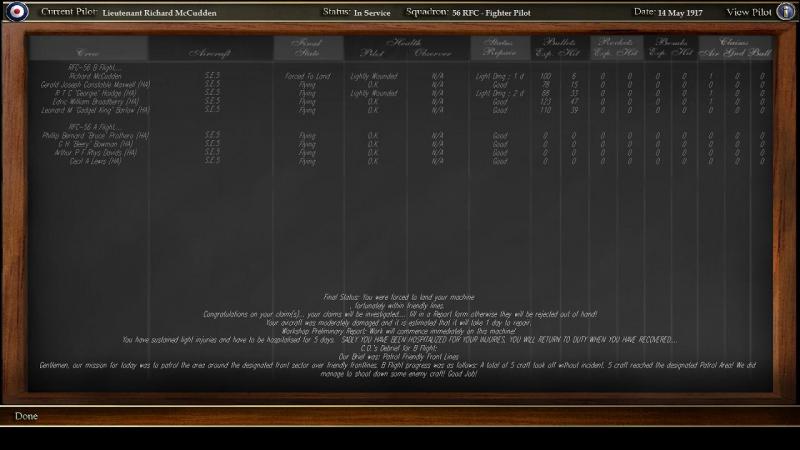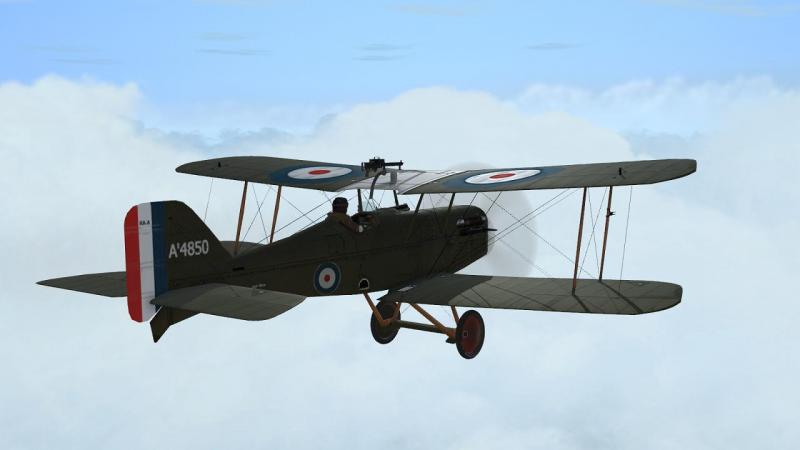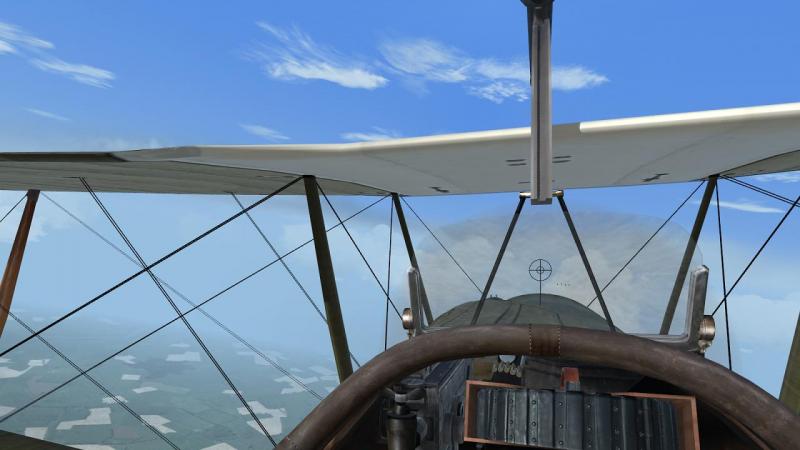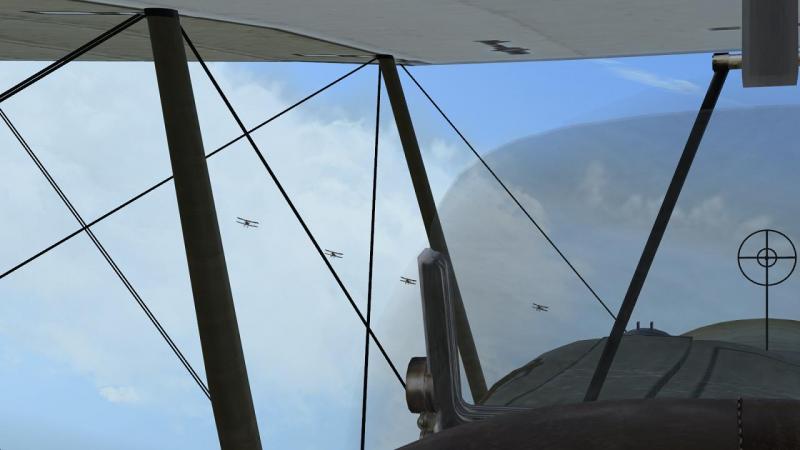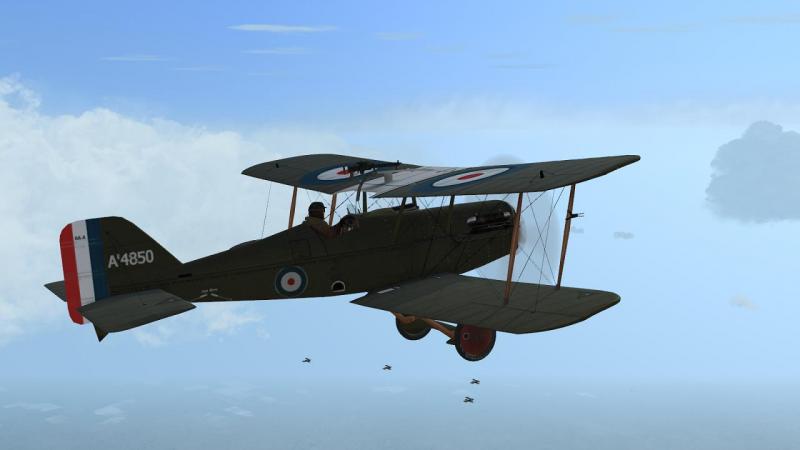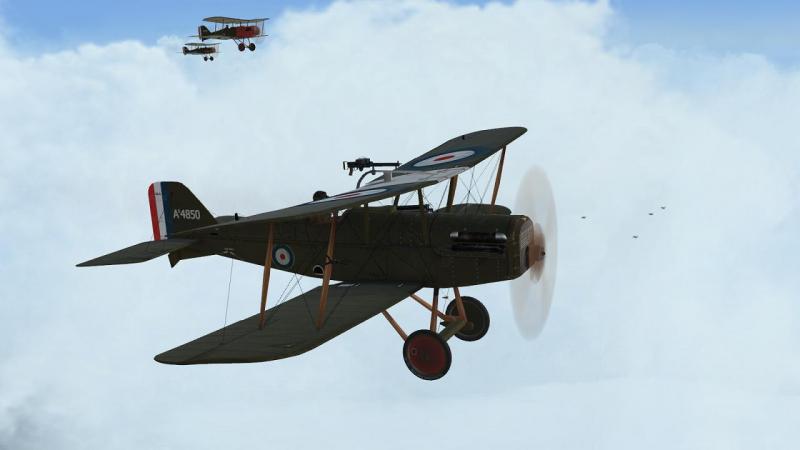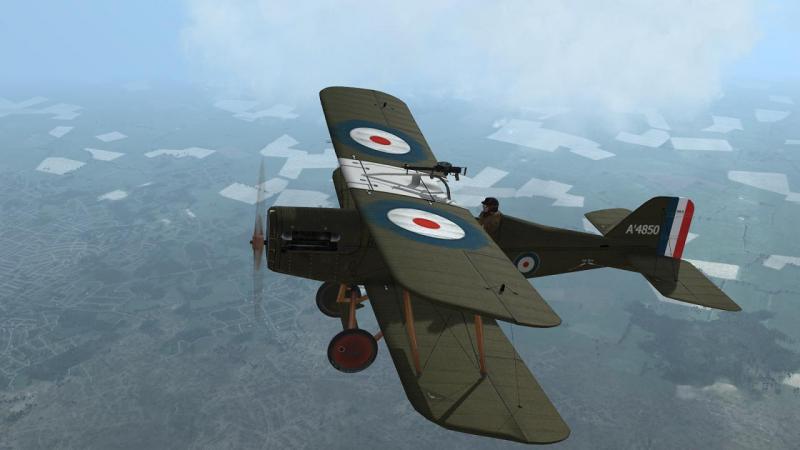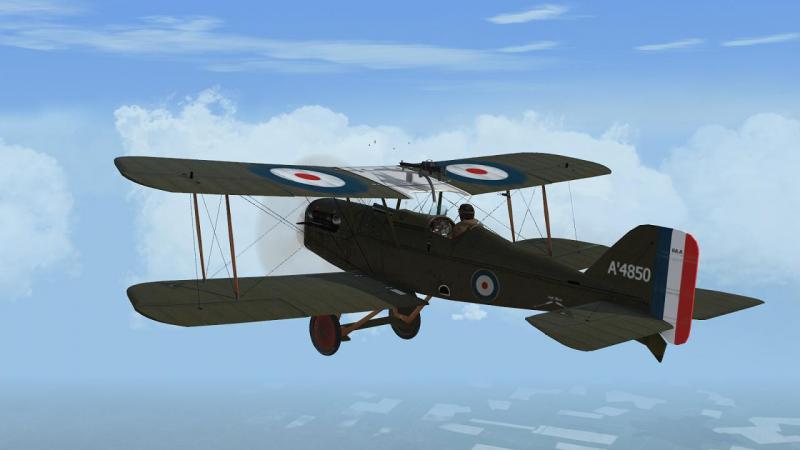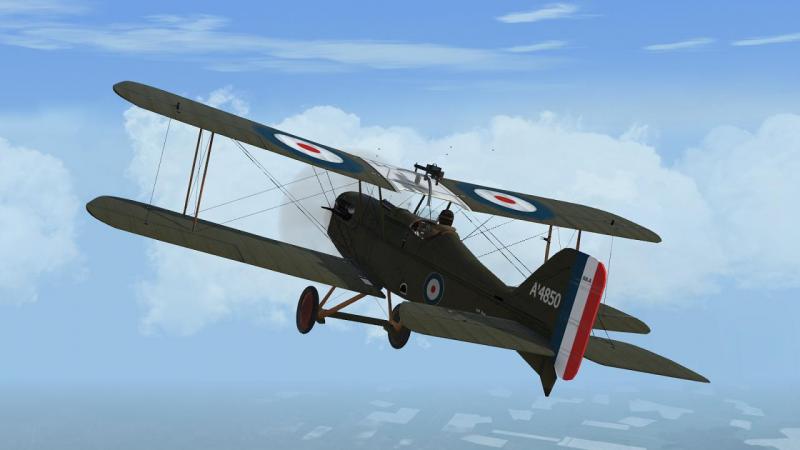-
Posts
3,749 -
Joined
-
Last visited
-
Days Won
7
Content Type
Profiles
Forums
Gallery
Downloads
Store
Everything posted by 33LIMA
-

WOFF: Screenshots and Videos
33LIMA replied to RAF_Louvert's topic in WOFF UE/PE - General Discussion
If you can't beat 'em, join 'em...consolation for the premature end of my 56 Squadron campaign is at hand, flying for their most famous opponents, Jasta 11. -

WOFF: Screenshots and Videos
33LIMA replied to RAF_Louvert's topic in WOFF UE/PE - General Discussion
'So far, still so good!' turned out to be a rather classic case of speaking too soon... First problem, despite being quite certain I got the balloon marked as our target, it's not credited, so we are sent out again to knock it down. Perhaps the Huns replaced it quickly. This time I have two companions and we get over the lines without incident. Soon, I'm looking down at the ballloon... ...but a glance behind shows my flight-mates peeling off, up and away to my left rear. Evidently, something is stalking us, and it's not hard to guess what. I came here to get the balloon, and now's my chance. I roll right and swing down and around towards it - you can see the balloon just above the right-hand trailing edge of my centre-section in the pic below. Archie begins to shell me as I come down. Another glance behind shows I'm still clear, with my flight mates still climbing up towards whatever the sun's glare is still hiding from me. I end up attacking along the fore-and-aft axis of the balloon, and at first I think he's not going to burn with a single pass. But I'm wrong - down he goes... I climb up and away to my side of the lines, drawing clear of the ground fire. At that point, I should have perhaps gone home, and had I done so, I'd have got away with it. However, there was the little matter of my two flight-mates, whose alertness had enabled me to accomplish our task. I still had plenty of ammunition left, so I began a right-hand climbing turn, back to the scne of the action. I don't usually turn on labels, but this time I did, because I was experimenting with the keyboard commands to check if I had 'dot mode' turned on. What the brief glance I got at the text labels revealled was a sky full of Albatros scouts, mostly disengaged, but on top of the heap, one was fighting against a solitary SE. I got no screenshots of the long dogfight that developed once I arrived back up there. But I chased that Albatros down to low level, and finally clobbered him as he tried to land. However, by that time I was down level with several of his friends, and had to make a run for it with their bullets cracking and snapping into my kite. Not to be left out, Archie was having a crack at me, too. Literally dodging between the trees persuaded the V-strutters to abandon the chase. But just when I was beginning to think I might make it back over the lines, my motor gave up the ghost. I clipped a fence trying to get down into a decent field, but managed not to turn her over. As it was, I only just avoided smashing into a clump of trees at the far side of my forced landing ground. I knew my campaign had come to an early end, but instead of being made a prisoner, I was rather miffed to be told that I had been killed 'by direct enemy action', which seems to happen to me rather a lot after what seemed to have been a half-decent forced landing. Perhaps I should have got out while I still could and not turned back, but at least, the honour of the squadron has been upheld! OK, this has been more of a mini-mission report than a screenshot post, but if nothing else, it illusrates that there's a lot more to flying WOFF than taking pretty pictures! -

WOFF: Screenshots and Videos
33LIMA replied to RAF_Louvert's topic in WOFF UE/PE - General Discussion
Scenes from the latest mission in my 56 Squadron campaign, May 1917... Two of us are detailed to shoot down a German observation balloon. But on reaching the front, I see white smoke puffs from friendly Archie, engaging unseen enemy aircraft down low and left. After watching cautiously for a while, I can see only one Hun, who appears to be putting on some kind of flying display for our troops...perhaps he's strafing them. I go down and put a stop to this. The red-tailed V-strutter can out-turn me but by using what today might be called low yo-yos, I get him, and then scoot on over towards my original objective, the balloon. I decide to attack the 'sausage' from the east, taking advantage also of some cloud in that direction to give me cover from the German gunners who have seen me coming and are blazing away. My flight-mate is lagging behind but I press on. coming out of the cloud, it takes me a while to spot the balloon again but I'm soon diving down onto him, throttled back and guns blazing. He begins to fall, trailing a plume of dark smoke; the next second, as I open up and jink away, he's goung up in a ball of burning hydrogen. I've come off him heading west and home as planned. Instead of my flight-mate catching me up at this point, I find I'm being tailled by another Albatros, this time one with a black fuselage. He seems to be hot stuff and lands a few hits on my S.E.5, but again using the vertical at the cost of my height, I manage to get some hits in return, cause him to break off and run for it. My Lewis Gun is out of rounds, but the Hun is unable to out-run the rounds from my Vickers. Down he goes... ...and back I go to Vert Galand, with two Huns and a balloon to claim, equally pleased to find my flight-mate has also made it back to safety. My log book shows eight confirmed victories from seven operational flights, and three claims pending confirmation... ...the latter likely including the Hun with the black fuselage, whose demise I have recorded in what I trust will be sufficient detail, to ensure that confirmation follows... So far, still so good! -

WOFF: Screenshots and Videos
33LIMA replied to RAF_Louvert's topic in WOFF UE/PE - General Discussion
-
The heavy stuff arrives at last! Pavlovka campaign, mission report #4 To relieve the pressure on my infantry and pioneers around Pavlovka, I have moved a platoon of StuG III self-propelled 7.5cm guns to the south of the village, and a heavy tank platoon to its west. The StuGs aren't yet close enough to relieve my battered eastern bridgehead. But the Tigers are well placed to enter the battle to the west. At the operational phase, I order two pioneer platoons to destroy the encircled enemy platoon to the south-east of Pavlovka, as a first step towards a concerted push with armour and infantry northwards, where what's left of my eastern bridgehead is still clinging grimly on. The Reds have light tanks up there and I'm not going to tackle them until the StuGs arrive. In the meantime, my people up there will have to hang on a little longer. Over to the west, I order a strong, concentric assault on Pavlovka, with three grenadier platoons and the platoon of Tigers. On the left, a grenadier platoon will cover the open flank by attacking eastwards along the banks of the Mzha. In the centre, another platoon, with my tanks in intimate support, will attack east into Pavlovka itself. On my right, my third grenadier platoon will attack northwards, into the centre of the village. In the Initial Orders screen below, the blue arrows are inherited from my operational-level orders, and don't reflect the actual axes of attack I have just described. My grenadiers begin to advance across the dark, snow-covered terrain. Yes, it's another night operation! Just behind them, my heavy tank platoon rattles and roars forward. In early 1943, it was not uncommon for heavy tank companies to have a mix of Tigers and Panzer IIIs, though the latter were normally the 'close support' version (Ausf. N) with a short 7.5cm gun; here, we have instead long-barrelled 5cm weapons. The tanks begin to catch up with the grenadiers as the hovels of Pavlovka loom through the darkness ahead. The tension mounts as we reach Pavlovka. I have ordered the tanks to advance only as far as the outskirts, as I don't want them running into hidden enemy infantry or A/T weapons in the dark. The grenadiers will press on, at least until contact is made. It's not long in coming, and it's my troops in the centre - the grenadiers with the tank support - who hit it first. There are enemy troops over there, near a cluster of isolated buildings, north of Pavlovka, and a fire-fight soon develops. The enemy there are soon wiped out but now, the grenadier platoon coming up from the south bumps enemy infantry between them and the village. I'm still watching the battle from the positions of my troops in the centre of my attacking force, and the contact report on the radio is soon followed by tracer and illumination rounds over in that direction, marking the scene of the latest action. My tank crews, who have just unbuttoned, close up again, ready once more for combat. I waste no time in ordering my halted tank platoon to get moving again, and assault deeper into Pavlovka. This will help their accompanying troops to clear the village and threaten the rear of the new defenders. I try to call down some artillery into Pavlovka, ahead of my troops, but I don't have a dedicated forward observer, and none of my platoon command elements can raise either gunners or mortarmen on the radio net. My tanks press on into the village, but meet no further opposition there... ...so I order them to swing around slightly to the south, to get clear of the buildings, where they can have a less obstructed run at the Soviets who are resisting the advance of my right-flank grenadier platoon. The Panzer IIIs take the lead, with the Tigers backing them up. At this point, GT:OS announces that the Soviet 'key point' in Pavlovka has fallen! The enemy opposityion there certainly seems to have melted away. You can see from the message log that at one point, they asked for a cease fire; naturally, Das Reich is disinclined to parley with Bolshevists, so this went unanswered. While checking the map, I notice with some alarm that the battle timer has already gone into 'countdown' mode, indicating that the curtain will soon come down - in just over four minutes, at the point the picture below was captured. Why so soon, I have no idea. After taking Pavlovka, I had planned to exploit to the north and re-establish my western bridgehead over the Mzha. Not much time for that now! My lead panzers have by this time linked up with my right flank grenadier platoon just south of the village, lit up briedly by (presumably enemy) illuminating rounds. The idea was to swing both tank and infantry platoons north and attack along the same axis, clearing enemies reported between Pavloka and the Mzha. But if I have any hope now of gaining the far bank in this sector, I need to try something different, and quickly. The ilumination dies away again, not before I have noticed enemy trenches up ahead of my leading tanks. This comes as a bit of a surprise, so I let both tanks and troops continue, so as to make sure that these quite extensive field defences are definitely cleared of their former occupants. They haven't been! Some Soviets are still around out there. Tigers, Panzer IIIs and grenadiers crack off bursts of MG fire into the darkness. This finally seems to do the trick, but a difficulty of a different kind is about to take a hand. One of my Panzer IIIs runs into the defences, and just when I think he's got glear, his tail slips deeply into the last trench. He struggles to get out, but seems only to succeed in miring himself more deeply. One remedy in these situations is to intervene yourself, and give the unit an indididual 'Reverse!' order. This I quickly try, but to no effect. Instead, after a short struggle, two of the tank's crew get out and set about the right-hand track noisily with large hammers. Evidently, the panzer has shed a track. At this point, rather than risk further such misadventures, I order my tank platoon to break off and attack north-west. Up in that direction, my left-hand platoon has met no opposition and indeed, has established a small toe-hold over the Mzha. Nearby on the map, I can see there is a bridge or ford, which the panzers could help sieze. The bogged Panzer III's crew appear unworried at this turn of events. In fact, they turn on their lights as they continue to work. By this time, the rest of the tank platoon is on its way to the north-west, leaving the now self-illuminated panzer behind them. This leaves my right-hand grenadier platoon to assault north from Pavlovka to the river. Which they do, despite having taken some losses in their earlier battle south of the village. There are more entrenched Reds up here, but my grenadiers have a Marder SP gun for close fire support... ...and soon, the leading troops can see the dark band of the river, looming up ahead of them. Meanwhile, my two Tigers and the other Panzer III are now leading the dash towards the north-west of Pavlovka. But before they get there, my time runs out! I am awarded a draw... ...which is one of those nonsense results you sometimes get in GT:OS, as in SABOW. True, I have sustained some losses, despite having a comfortable superiority over the enemy. However, we have done considerably more damage to the Soviets, in a night attack against dug-in opposition. I had deliberately concentrated my forces, and I really don't expect to get 'marked down' for successfully massing strength against relative weakness. So I take this to be a victory, albeit not a glorious one and at a higher cost than I'd have liked. Back at the operational level, the map shows we have developed a strong position on our left and cleared the Soviet salient around Pavlovka, in the centre. Leaving a single Soviet platoon (depleted in an early battle) masked well behind our centre, we are now well poised to fight my planned second battle, on my right. Two panzer pioneer platoons will attack and destroy the enemy platoon in a defensive position south-east of Pavlovka. Then, they will link up with the StuG III platoon that is now standing by on their left flank, and attack northwards, to relieve my battered bridgehead east of Pavlovka. For a while. the battle felt like it had slipped from my hands. Now, with my heavier armour finally in action, I feel once again in control. Time to wipe out the Reds on the right, then Das Reich will be well and truly back on the offensive in this sector! I wish I had discovered the tactical marvel that is Graviteam Tactics: Operation Star years ago, but it took learning the wargame ropes in Steel Armour: Blaze of War, and an incredible sale on Bundlestars, to get me started. Better late than never! In over fifteen years of PC gaming, GT:OS I have found to be one of the very best, if not the best, I have ever played, certainly second to none. And I am looking forward both to completing my first campaign and to kicking off the many others available, from Ukraine to Iran and from Angola to Afghanistan. Most highly recommended! This is likely to be the last mission report I file before the Festive Season, so I'll take this opportunity to wish the staff, members and readers at CombatAce a very happy Christmas!
-
- 1
-

-
- graviteam tactics
- gt:os
-
(and 1 more)
Tagged with:
-

WOFF: Screenshots and Videos
33LIMA replied to RAF_Louvert's topic in WOFF UE/PE - General Discussion
-
Keil und kessel! 'Wedge and cauldron' the Germans were apt to call the common pattern of mobile operations - a force driving a wedge into the enemy's lines, then attracting the enemy to it like wasps to a honey pot, and having to fight off all comers, often surrounded. GT:OS was about to bring this experience to life forme. To the north-east of Pavlovka, my pioneer platoon had been nearly destroyed by a strong enemy attack supported by APCs and light tanks. A few scattered pioneers in trenches is all that’s left, along with a surviving SPW that’s back off and linked up with the infantry unmotorised platoon holding the left flank of the small bridgehead. It’s still dark when the Reds renew their attack. There’s no artillery preparation. Instead, the attack consists of several T-60 light tanks supported by some troops in Universal Carriers. Here's one of the light tanks... ...and here's one of the Carriers... This force rattles down the road to the north-east, outflanking us on the right and fanning out behind us. I’m forced to back my surviving SPW into the woods; he narrowly avoids being knocked out by the rampaging T-60s. Things rapidly go from bad to worse as another platoon of T-60s, with some dismounted infantry, pushes down a north-south track, right through the centre of my positions, between the grenadiers on the left and the few survivors of the pioneers on the right. By this point, pretty well everyone is beginning to panic, having no effective defense against even light tanks. To order them out of their trenches in the dark seems suicidal so I leave them where they are. The only thing that saves them is that the Soviets have other plans. I become aware that the T-60s and Carriers on my right are driving off to the south, towards the river to our rear. So that’s the plan. Rather than destroying us, they are intent on cutting us off and securing a bridgehead of their own, well in our rear. Not that there’s much left to destroy – a single SPW, a handful of pioneers, and a badly-depleted platoon of mostly leaderless and demoralised grenadiers. The fighting dies off. Somewhere, somebody is putting up illumination rounds. I think it's friendly forces to the south, responding anxiously to the sound of tank motors. Well might they be anxious. The map below shows the operational situation after the two night battles. Compared with the map at the start of this phase, the left-hand bridgehead is gone and the Reds have gained ground around the west of Pavlovka. On my right, what's left of my eastern bridgehead is just about still there, hanging on by its fingernails, as it were. But it has been almost completely encircled and is effectively cut off - the attacking keil has become a desperate, defensive kessel.The Soviets have thoroughly re-established their positions to the east of Pavlovka, linking up with some of the troops I had surrounded. The tables have been well and truly turned. Now, it’s the leading elements of Das Reich which are in danger of being encircled and destroyed. In fact, that process seems to be well under way. The one bright spot in all of this is that my Tiger and Sturmgeschutz platoons will very soon enter the battle – the Tigers are coming up on the right, and the StuGs are already well-placed in the centre. If T-60s and Bren Carriers is the best the Soviets have, we will surely pay them back in spades for the losses we have suffered. 'If', as the Spartans responded to the threats of Phillip of Macedon. Either way, time is running out… This is as far as I have got with my first GT:OS campaign and I am mightily impressed. It’s apparently one of the easier campaigns, so I will need to master things like calling in indirect fire (when it doesn’t work, I’m never sure if it’s because none is available, or because I’ve messed up my drills). But I won't be tempted to climb into a virtual, invulnerable helicopter, or turn on the labels. Win or lose, the grunt-level gameplay is far too immersive for that. GT:OS beats any other PC wargame I have played into a fairly distant second place. There are a few things I’m not massively keen on. There’s little sense of identity – you’re not playing the role of a specific commander, in either operational or tactical levels. Instead, you’re whoever is in charge of whatever forces happen to be in the particular area, at either level. And the forces you do get seem to be a bit of a mish-mash, rather than a well-formed all-arms company or battalion group with a specific and balanced composition. The briefings/orders are very lightweight - more like general directives. And the forces deployed are somewhat small for the area involved, like you are fighting a scaled-down version of a bigger battle, with platoons on either side where their might really have been companies, and so on. However, I have to say that Graviteam Tactics: Operation Star conforms beautifully to my idea of how a PC wargame should work, and well deserves all the praise that's been heaped upon it. The models, textures, environments, effects and troop/vehicle animations are particularly good. I love the ability to play reasonably effectively from ground- evel rather than God’s eye view and with on-screen markers turned off. Yes, it’s something of a handicap, but to me, this makes all the difference between playing what feels like a conventional wargame with miniatures, and playing an all-arms combat simulator from the perspective which the troops and commanders involved would have of the battlefield and the action. I also like the fact it’s not set up to be a click fest – the scope and pace of the battles and the decent AI mean you can operate like a real commander, making your plan, giving your AI subordinates their orders and leaving them to carry them out; intervening when necessary, rather than having to micromanage. You might as well play chess, as a PC wargame which lets you (or needs you to) exercise command and control over individual soldiers. The emphasis on platoon command and control reminds me of the best modern wargame rules I ever played, WRG's ground-breaking June 1988 set for platoon-to-battalion level, 1925-1950. With GT:OS, Graviteam has done a similarly outstanding job. Anyway, that’s enough plaudits for now, it’s time to get back into the fight! Division dropped me right into it by giving me this river-crossing mission with a hodge-podge of forces. I might have got away with it, if the Reds were as beaten as those fellows in the Head Shed seemed to think they were. Instead, the Soviets have made us pay a hard price. But now that my heavy armour has arrived at last, I’ll get a chance to show both Division and the Soviets that my spell on the staff in Berlin hasn’t dulled my ability to handle all-arms combat teams on the Eastern Front! Panzer, marsch!
- 5 replies
-
- 1
-

-
- graviteam tactics
- gtos
-
(and 1 more)
Tagged with:
-
Duels in the dark! The map above shows the operational-level situation at about the time of the most recent battles. Our (blue) territory still extends onto the northern bank of the Mzha either side of Pavlovka, but angry red arrows show that our bridgeheads are now being pressed hard. The good news is that heavier armour is now at last becoming available in our area of operations – a platoon of Tiger tanks (at this point in the war, possibly made up to strength with some Panzer IIIs) and some StuG III assault guns – indicated by the two oval 'fully tracked vehicle' unit symbols on the right no longer being ‘greyed out’ (the one with the little 'H' for 'Heavy' under the oval is the Tigers). I waste no time in ordering these westwards, towards the action, but it’ll take time for them to arrive. In the meantime, there are more battles to be fought by my troops already in contact, on either side of Pavlovka. It’s now evening and pitch dark. The first fight involves the troops to the west. These men – an infantry platoon with an attached 7.5cm SPW kanonenwagen – had earlier secured a small area on the northern bank of the Mzha, and held it against an enemy counterattack. But now, they are on the defensive, back on the southern bank of the river. How this happened, I’m not sure. Did GT:OS ‘auto-resolve’ this? Or in deploying them just now, did I place them there myself, without realising I could/should have kept them north of the river? Either way, even if it's down to the Deutscher equivalent of SNAFU, the good news is that they end up in a compact defensive position, well dug in and with good fields of fire over mostly open ground, covering both near and far banks of the river. Here's the kanonenwagen... ...and here, stood to and shivering impatiently in their trenches, are my grenadiers (the Germans re-titled their infantrymen in this fashion mid-war)... If you can see anything at all in these pictures, you may be able to make out the dark ribbon of the river running across our front, maybe 75 meters away. For a while, nothing happens and I use time acceleration. I’ve not ordered fire to be held and the party eventually kicks off just after 20:00 hours, when enemy troops are spotted to our right front, on the far bank of the river. You hear a subtle electronic 'beep' sound which signifies a report has been received, whether verbally or by radio. Check the map, and the 'signals log', top right, shows you the message, while animations on the map provide detail - in this case, the flashing red circle centres on the location of the spotted enemy. These are duly fired on. Then some more Reds appear, this time about half left. Tracers lash out towards them and our grenadiers busily work the bolts of their rifles as they join in. The SPW cracks off a few 7.5cm HE rounds, first to right, then backing out of its revettment to the left, the impacts flashing and booming noisily in the scrub over the river. From our positions, I can see nothing of the enemy myself, and am reliant upon the reports coming in from our foremost positions. The odd muzzle flash out in front shows where Soviet soldiers are firing back, rifles mostly, with the odd PPSh SMG or Degtyarev LMG. A green flare goes up somewhere deeper on the enemy side. After a while, the firing dies back. I turn time acceleration back on. It drops out occasionally when there’s further shooting, but the action is pretty desultory and it seems clear that we have beaten off a weak attack by unsupported enemy infantry. We’ve held our positions and inflicted some casualties, but from whatever cause, are still back on the wrong side of the river. The western bridgehead has been given up. Still, we've won the fight. In the picture below, the command interface overlay has been turned back on and the clock read-out, top centre, has been turned to 'time remaining' mode, indicating that the curtain is coming down in 23 seconds. So far, so not-too-bad. But the next battle is kicking off over on my right flank and this one will be an altogether nastier business. ...to be continued!
- 5 replies
-
- graviteam tactics
- gtos
-
(and 1 more)
Tagged with:
-
Achtung! Feindlicher panzer! The Soviet APCs coming down the little road turn out to be Universal (aka Bren Gun) Carriers, a British type supplied to the USSR via the Arctic Convoys. The gunner in the lead vehicle is killed when our troops open up, having let him come down nearly to the end of the road. He's not alone, though, as a second Carrier is coming down the track behind him My Marder has a crack at the leading Carrier... ...which goes up in flames, causing the second one to shower clouds of snow from its tracks as it frantically backs up. The knocked-out Carrier burns brightly, a fine boost to the morale of my pioneers and a warning to any Reds who should come this way. The warning is emphasised my small arms fire in the general direction of the apparently retreating enemy. All this activity is based on my original orders and dispositions - I have not intervened in any way. At this point, the airwaves come alive with fresh contact reports from the infantry platoon on my left. The Soviets - footsloggers this time - are coming down through the woods towards us, from the direction of a track junction to the north. Small arms fire from my grenadiers cuts down the enemy. I walk the camera a short way up to the north for a better view, and watch the Soviets try to make headway against our fire. Their casualties mount and the attack seems to peter out. At this point, the tide of battle suddenly turns. There are explosions and heavy gunfire back over to the right, where I have left my pioneers to handle what seemed to be an abortive Soviet probe. Radio reports confirm that the attack there has been renewed, and this time, with tanks! They're T-60 light tanks and they come down the road from the north-east. My Marder sends the leading tank to hell in flames... ...but the others pull off the road to the east, then swing around to atttack. Somehow, one of them makes it past us into the open ground on our right, and swings west to attack us from the flank. He quickly knocks out the SPW covering my right rear. I have that sinking feeling, as I see the battle spiralling rapidly out of my control! I'm reluctant to order anyone out of their defensive positions into this storm of steel, so decide to let them fight it out from where they sit. My platoon commander's SPW is nearby, but facing the wrong way. And he's too deep into the woods to have a clear field of fire out towards the T-60. To cap it all, the crew has taken casualties, already. To his right, the T-60 makes a dash into the woods, past the burning SPW... ...and comes in behind my Marder... Another T-60 charges the Marder from the front. The loader has already been killed or seriously wounded and the gunner doesn't fire - either he's petrified, or the chamber is empty. TheT-60's crew suddenly bail out and cower fearfully in the muddy snow! I think the tank has been hit by the 3.7cm gun on the platoon commander's SPW. But by this time, two more T-60s have made it past us into the open ground between the woods and the river, beyond the burning Carrier. The T-60 which doubled back has come to grief, though, turning turtle in an abandoned tank scrape. Within a matter of minutes, my panzer pioneer platoon has been decimated. The Marder and the commander's SPW are both out of action. As the two advancing T-60s turn west to run along the road behind our position, I manage to save my surviving SPW by swinging it around and backing it into the woods still being held by the infantry platoon on the left flank of my bridgehead. That platoon is still largely unaffected, having won its firefight with the Reds coming down from the north. I can't pull it back, as the Soviets now dominate the open ground to our rear. So I order it to attack north, deeper into the woods, if only to take it further away from the T-60s now motoring about to the south-east. But GT:OS now decides enough is enough and brings down the curtain. We've held our ground and inflicted much heavier casualties than we suffered, but at the cost of my main striking force - my precious panzer pioneer platoon and its SP A/T gun - virtually wiped out. So I'm not surprised this counts as another defeat. It certainly felt like one! Where are those b***dy Tigers??? ...to be continued!
- 5 replies
-
- 1
-

-
- graviteam tactics
- gtos
-
(and 1 more)
Tagged with:
-
Die Bolshevisten kommen! The battle around my eastern bridgehead kicked off next and was to make the one in the west look like a tea party. Here, I had pushed two platoons over the Mizha east of Pavlovka, deploying them in another wood, in a rough semicircle with its base running east-west parallel to the river. Both platoons had taken losses in previous battles. On the left, the infantry platoon had lost two section comamnders and its attached cannon-armed halftracked Schutzenpanzerwagen (SPW) , leaving the surviving crew fighting on foot. On the right was my panzer pioneer platoon, which had also lost an SPW, but still had its attached Marder III 7.5cm SP A/T gun (pictured at top). The platoon commmander also still had his own SPW, mounting a useful 3.7cm weapon in place of a cab-mounted MG. By this time - it's late afternoon, and daylight is beginning to fade - both vehicles and troops are dug in. The edge of the woods is about 20 meters behind the SPWs in the picture below, and the river is about 100 meters further away again, on the other side of a stretch of open ground. At this point, a pair of small tracks runs south through the woods past our positions, with a small road to our right front, running up to the north-east. My pioneers are deployed in depth, mainly to cover these tracks and the road in particular. The latter runs from left to right across the picture below, about 50 meters beyond these SPWs. Anything coming down that road in particular, is going to get a good pasting. At least, that's the idea. The Marder is in front of these two SPWs, covered by another one on each flank. All three light AFVs are also slightly dug-in, and the Marder has a good field of fire down to the road, between the trees. I really love the visuals in GT:OS. The AFVs look as good as 1/35 models, never mind the 1/300 or 1/285 miniatures typically used in company-level wargames. Plus they're fully animated. And the environments are equally good. All this helps create the feeling that I'm in a wintry wood in the depths of the Soviet Union, waiting with my troops for the enemy to arrive, and not merely looking down onto a wargame table. It's not long before the Soviet baillifs arrive with the evident intention of chucking us out of here. And this time, they aren't just some poor footsloggers. An APC of some sort is reported headed towards us along the road running up to the north-east. Stand to! After several battles, the pioneers are depleted, so we'll be relying mainly on our own light armour in this battle. Doubtless knowing this, my SPW gunners crouch down behind their gunshields and prepare to give battle. ...to be continued!
- 5 replies
-
- graviteam tactics
- gtos
-
(and 1 more)
Tagged with:
-
Das Reich faces defeat as the Soviets counterattack! Pavlovka campaign, mission report #3 Despite having only limited forces at my disposal - a mixture of unmotorised and armoured (engineer) infantry - I was, I felt, doing quite well my in battle to clear Pavlovka and secure bridgeheads over the River Mzha. I had destroved some Soviet defenders, left some battered remnants surrounded in my wake, and secured a small bridgehead over a ford to the west of the town, with my 'foot' infantry. To the east, I decided that my panzer pioneers would by-pass the remaining Reds holding Pavlovka on the centre, and secure another crossing to the east. All this went well - until the Soviets decided to do something about it. In fact, they decided to wipe out both my bridgeheads, starting with the one on my left. Here, my force consisted of two unmotorised infantry platoons, one with a self-propelled AT gun for direct fire support - a Marder II, pictured at top. We still hadn't had time to dig in, but I'd deployed the platoons in depth facing roughly north-west, astride the expected axis of the enemy attack. There was no certaintly the Soviets would comply with our expectations, but I wanted to keep my platoons in decent visual cover in a compact, mutually-supporting grouping. No point in feeding Oxo cubes to the lion, as a British officer said of Arnhem. If the Reds went another way, fair enough, but if they came to get us, well, we'd be ready for them. Here's the commander of my left-hand platoon, anxiously scanning towards the western edge of the woods. The river is about 50 metres his left. And here are some of his troops. As it happens, they wouldn't have long to wait, because it was in this platoon's sector, that the Reds would first show their hand. As usual, I'm playing with labels turned off and avoding a 'God's eye' view of the battlefield. This makes combat look and feel much more realistic - and a lot more suspenseful. GT:OS likes to keep you waiting, rather than pitching you right into the fight - time acceleration is available for the suspense-haters or the time-deficient. The party begins when my left-hand platoon - the one with the Marder - spots the enemy, moving left to right across its front, towards the river. I have already enabled firing at will in Initial Orders and it's not long before the foremost sections have opened up. They are ably supported by the Marder, which uses its AA machinegun as well as the Pak. Some of the Reds are shooting back at us, but it's obvious that others are crossing the river up ahead, turning our left flank. This isn't good, but I have set up with a section back to the left rear, so as to provide us a degree of all-round defence, textbook style. I'm still under attack from the west and I'm not going to split my force to go chasing after the enemy. I have a second platoon to our north-east; but they are covering the right flank of our position and I'm not about to compromise it by redeploying them. I've made my plan and for now, I'll stick to it, rather than dancing to the Soviets' tune. I take the luxurtyof pushing the camera out to the west and south to the river -not too far, just far enough to get a better view of what my forward troops can already see. It's quickly obvious that some enemies have got over the river, but plenty of them have fallen in the attempt. My Marder has been shelling the enemy during their crossing, but now switches targets - engaging the enemy in the woods to the west. He fires several rounds, the loader steadily feeding the long 7.5cm rounds into the breech each time. But some of his shells splinter the trees just to his front, causing casualties to my own troops. I track the camera about a hundred meters to the west, and get a closer view of the enemy advance. There aren't too many of them, but they are coming on, somewhat hesitantly, using fire and manoeuvre. My Marder cuts into them with an HE round which bursts just in front of an enemy officer, who falls to his knees before keeling over. However, there are some casualties on my side, too, including those which I believe are down to wood splinters thrown out by the Marder's fire. At this point, the shooting dies away. The platoon to the north remains unengaged, but any thought of redeploying to sweep up such Soviet forces as have penetrated to our rear ends when GT:OS decides the battle is over, for now. Despite my boys having inflicted much heavier casualties, we are adjudged to have been defeated. Evidently this is because because the Reds have made substantial gains in territory. I'm not too worried about this. I'm more concerned about preserving both my own forces and the bridgehead, in both of which goals I have succeeded. I don't think the enemy behind us are in any great strength. I am happy to leave the job of mopping them up to other parts of the Division which I know from the briefing are coming up from the west and south - including some heavy tanks. We're still stretched fairly thinly up here, and the critical question is whether we can hold on until the heavy stuff arrives. ...to be continued!
- 5 replies
-
- graviteam tactics
- gtos
-
(and 1 more)
Tagged with:
-
From the album: Steel armor - Blaze of War
-
From the album: Steel armor - Blaze of War
-

Steel Armor Blaze of War - Chieftains in M60 gunner's sight
33LIMA posted a gallery image in Member's Albums
From the album: Steel armor - Blaze of War
-
In my DBW install ('46 4.10m) they go by default into C:/Ubisoft/Il-2 Sturmovik 1946/MyScreenShots; in my CUP install, it's C:/Il-2 Sturmovik 1946/MyScreenShots and C:/Il-2 Sturmovik 1946/ScreenShots (not sure why two different folders are used). I recall advice against installing Il-2 into Program Files so maybe that is indeed part of the problem.
-
-

WOFF: Screenshots and Videos
33LIMA replied to RAF_Louvert's topic in WOFF UE/PE - General Discussion
Scenes from a 56 Squadron campaign, mid-1917... ...a sausage for breakfast... ...and the ravages of war... -
From the album: Steel armor - Blaze of War
-
From the album: Steel armor - Blaze of War
-
From the album: Steel armor - Blaze of War
-

Iron Warriors Balkans on Fire - knocked-out Leopard 1A3
33LIMA posted a gallery image in Member's Albums
From the album: Steel armor - Blaze of War
-
From the album: Steel armor - Blaze of War
-
From the album: Steel armor - Blaze of War
-
Sportmanship takes a back seat! The onrushing five aircraft are, of course, Huns. In fact, they are Albatros D.IIs, readily distinguished from the more modern D.IIIs by their parallel, rather than V-shaped, interplane struts, and their square-cut wingtips. Happily, I get a burst into the leader as our two formations come together, forcing him to pull up and out of my way. A glance behind shows the two flights merging, as I give the attack order and re-focus on the fellow I have hit. Not to be left out, Archie is now blazing away into the middle of it all, silly fellow that he is. By this time, I'm pulling hard around to get after my intended victim. I get in another burst and am gratified to see the Albatros apparently dropping out of the fight! This is where I begin to come unstuck. In my haste to get onto the Hun's tail, I fluff my turn. In many WoFF aircraft - Albatrosses and Nieuports come to mind, as well as my present mount - ailerons have little effect, in producing a turn - you need a good dose of rudder, not just to balance a turn but to get and keep it going. This is much more pronounced than other sims I've 'flown', WW1 or otherwise. Not only that, but often, when I'm in a turn, I seem to hit a 'hard stop' at about 45 degrees of bank - further stick deflection to the side will not roll me beyond this. It's not quite adverse yaw, where aerodynamic forces can roll you out of a turn, in the opposite direction. I think this hard stop may happen when I don't use enough rudder - it's hard for me to get into the WoFF rudder habit as it's not the only propsim I 'fly'. It's like I have allowed my plane's nose to drift high, out of the plane of the turn, so that an increased angle of attack or greater lift on the lower wing is preventing it going down any futher. To break this, I usually either back off the turn and apply the correct rudder to get it going again; or, if I'm high enough, push the nose down really hard, so that I go into a steep downward spiral, which enables me to get the nose around the turn, but with a realtively huge loss of height. This time, I make matters worse by spinning out of my turn. By the time I recover, my intended victim has got away. Worse, a friend of his is now having a pop at me. The first I know of this is the sound of bullets zipping and whacking into my S.E.5. Looking behind as I try to get out of the line of fire, I see him boring in. By pushing my nose down again, I manage to tighten my turn - this time, without inducing a spin - to the point he starts slipping wide. Now, to turn the tables! But it's not to be! Suddenly, I can feel the power and hear the sound of my engine fading away. My machine begins to decellerate. Soon, I'll be flying a glider, and this is no place for that. I dive away with what speed I have, and quickly come around till I'm heading west, towards relative safety. I'm still over No Man's Land, but it looks like I have a fighting chance of making it to our trenchlines. But first, I need to get clear of the dogfight. At this point, my engine dies completely and my prop spins to a halt. I push the nose well down, to build up speed before levelling out on my run for home. I usually leave the Tactical Display turned off, except to initiate padlocking, but now, I turn it on, the better to keep tabs on my recent assailant. This reveals two things, neither of them terribly welcome. First, I see that I am still some way short of the middle of No-Man's Land, indicated by the crooked black line across upper part of the display. And it tells me that my foe is no beginner - he's an historical ace, Hans Auer (according to the Aerodrome website, at this time serving with Jasta 26). It's worse than that. Leutnant Auer, it seems, has no intention of taking a chance on my reaching friendly territory and living to fight another day. He slips in behind me and starts pumping nickel-coated lead into my near-helpless machine. So much for chivalry! Would he have relented if I had opted to force land where I was, behind German lines? I have no intention of finding out. Instead, I jink as best I can, at the cost of more of the precious altitude that I need to expend my glide far enough to reach safety. My tormentor overshoots, but wheels around to come in for another crack at me. My S.E. survives more hits from his next burst, but catch a bullet wound in the process. Before he can attack again, I run out of height and plonk my kite down onto the shell-scarred ground. By some miracle, the terrain here is reasonably level and I manage to get down without a wreck. And to my boundless joy, I find that I am on our side of the lines! Looking up, I see Auer fly off to the east, through blood-spattered goggles. Was he put off by MG fire from our trenches? I didn't see any, so perhaps I should be grateful that he wasn't so unchivalrous as to strafe me on the ground. Perhaps I'll have the opportunity to discuss the matter with him on another day, I tell myself...preferably, with my guns doing the talking. I'm mollified somewhat to find that I'll be back at the front after another short spell in hospital, and that I'm not the only one in 'B' Flight to make a claim today - Hoidge got one, though also lightly wounded, as did old Broadberry. I submit my claim form, noting witness name, type brought don, location, height and time. Hopefully, all three of us will get confirmations. We'll certainly be able to lord it over 'B' Flight, who missed all the excitement and fired not a round! It's hard to believe I'm just three missions into my 56 Squadron campaign. I've certainly had an eventful enough time of it, a heady mixture of experiences - flight-leading; navigating across a convincing WW1 landscape, with suitably majestic visuals; scanning the skies; being 'Archied'; the suspense from sightings of other aircraft, friend or foe, going about their business; manoeuvring my flight to best advantage; the thrill of combat; the fight to survive, and bring my boys home too, if I can. Wings over Flanders Fields certainly brings it all to life...if those darned Huns let you live long enough!
-
Over the front! Having reached the front, I’ve swung ‘B’ Flight around, to follow the trenchlines back up to the north-west. In doing so, like a sentry on his beat, I've turned towards the enemy, into Hunland, so as not to expose our backs to the enemy. This brings me closer to the large town of Cambrai, near to which are several German airfields. There’s no sign of aerial activity, though, but as if to make up for it, we are heavily 'Archied'. The black bursts of shellfire fall sufficiently close and thickly that I fear somebody will be hit, so I throw in some changes of height and heading to fox the gunners. Soon, the fire becomes more scattered and less intense as the range increases, and we all appear undamaged, much to my relief. After a few miles, I decide it’s time to reverse our course and patrol back down the lines. But as I’m about to turn about, I see several dark specks in the sky up ahead. All I can tell is that they’re not drawing ground fire, and are just inside Hunland but drifting slowly to the west, towards our side of the lines. They could be friend or foe. Hedging my bets, I adjust our course so as to cut them off. They’re slightly lower, so I maintain my height, with the intention of still having that advantage when I get up to them. The unidentified aircraft slip over onto our side of the lines, then begin to turn left, drawing steadily closer. Soon, I can make out that there are four of them. They seem to be making a wide left turn which, if held, will take them back into Hunland. I adjust my intercepting couse accordingly. Whoever they are, we won't be long in finding out. They could well be our boys, but if not...well, it does no harm to err on the side of caution. The specks grow bigger and become biplanes. It’s not long afterwards that I decide they look like S.E.5.s, just like ours. A closer look confirms that they're ‘A’ Flight, flying the same patrol but not seen since a few minutes after take-off. The other S.E.s pay us no particular attention, but slowly swing around in their wide left-hand turn, until they are headed back down the lines to the south-east. That’s where I’m going, too, so I tag along, slightly higher and to their right. Nine S.E.s should be enough to give any bunch of Huns we're likely to meet a fairly hot time. In fact, I begin to worry that the enemy might be put off from making an appearance. So, when we reach the point where we originally reached the lines, opposite Cambrai, I turn around again, and let ‘A’ Flight continue on to the south east. This time, we're more or less directly over the lines, a little further away from those nasty men on the ground who shelled us heavily, the last time we passed this way. Cambrai, sitting just outside the shelled area, can be seen to the centre left of the picture below. I'm hoping we will be far enough away to escape Archie's attention, this time. We're not fired on, but it seems that other hostile eyes may be watching us. Right and ahead, at about the same level and well on the enemy side of the lines, I notice a cluster of dark specks. As I turn into them, I can see that they have already opened out, which indicates that this formation is rapidly drawing closer. In fact, they seem to be coming straight for us. This doesn't look terribly friendly! ...to be continued!

